What Is a Cover Page?
A cover page, also often called a cover letter, is one of the first things a hiring manager reads when reviewing your application. To make a positive first impression, your cover page should be easy to read and include information about why an employer should hire you. Read this article to learn the basics of cover pages, what details and information should be included and how to format a cover page.

What is a cover page?
A cover page is a one-page letter you send to employers in addition to your resume and any other application materials they ask for. You can describe your skills, experience, education and achievements that make you a good fit for the role. Be sure to include the reason why you applied for the position. A cover page can serve as a way to explain your interest in the role since a resume has limited space. Consider submitting a personalized cover page with each application you send.
What to include in a cover page
Here are the main items you should include in a cover page:
At the top of your cover page, add a formal business header.
Example of a business header:
- Your name, address, phone number and email address
- The recipient’s name, company and address
If you’re unsure of the name of the person you need to send your cover page to, you can use the company name instead.
After your header, add a salutation that addresses the recipient. A professional salutation will have the recipient’s title and last name. For example, ‘Dear Mr. Wise.’ Reread the job description to see if there’s a specific person you should address, or you can contact the company. Use ‘Dear Hiring Manager,’ or ‘Dear Hiring Committee’ if you don’t know who to address.
Details about the job and company
In your first paragraph, explain what job you’re applying for and how you found it. Specify which website you found the job advertisement on so hiring managers know which recruitment efforts are working.
If someone referred you, include their name so the hiring manager can contact that person for more details about you. Including a name can also get the employer’s attention, making it more likely that they’ll invite you in for an interview.
Skills and experience
Use your second paragraph to describe why you’re the right person for the job. Go into detail about any certain skills you have that the employer may find useful. If possible, relate your skills to some in the job description. Your cover page is a good place to write about how you use your skills in the workplace, so give specific examples.
If you have any experience that relates to the job, you can also write about that in the second paragraph. Try to incorporate how you used the skills you mentioned to excel in the role.
Additional items
If education, certifications or licensure are important for the job, list them in the next paragraph.
Examples of additional information you might want to include:
- Degree title
- Year awarded
- Awarding body
- License number
- Expiration date
You can also add any achievements or accomplishments, such as winning an award.
Interest in the role
In the next paragraph, tell the employer why you’re interested in the role. Look at the company’s website and the job description, then pick one or two things that make you excited about the job or business. This shows the employer that you did your research and truly want to work for the company.
The final paragraph of your cover page should have a call to action for the hiring manager to follow up with you. State that you’re looking forward to learning about the next steps in the interview process, and that they can contact you if they have any questions about your resume and qualifications. You can also thank them for taking the time to read your cover page and resume.
After that, include a professional closing, like ‘Sincerely,’ ‘Best’ or ‘Regards.’
Name and signature
Add a space after your closing to add your signature. If you’re sending your cover page by email, you can add an electronic signature or leave the space out. Below your signature, print your name.
Cover page tips
Here are some tips to consider when writing your cover page:
- Keep it short. Cover pages should be less than a page long. This ensures the employer can read it all the way through instead of scanning it.
- Only include the necessary details. To keep the hiring manager’s interest, add details that are relevant to the role. Keep it focused so it’s easy to read in a short amount of time.
- Use keywords if possible. Look at the job description for any keywords you might be able to add. Skills, responsibilities and qualifications are all good areas to check for words you can incorporate in your cover page.
By following these tips, you can create a cover page that hiring managers read from beginning to end.
Cover page template
You can use this template to write your own cover page:
[Your name] [Your address] [Your phone number] [Your email]
[Recipient’s name] [Recipient’s company] [Recipient’s address]
Dear [Recipient’s name],
[In the first paragraph, describe the role and how you found it.]
[Use the second paragraph to describe your skills and experience.]
[The third paragraph should explain your interest in the job.]
[End your letter with a call to action.]
[Closing], [Signature] [Your name]
Cover page example
This is an example of a basic cover page:
Michael Chang 43 2nd Ave. Franklin, PA 555-555-5555 [email protected]
February 4, 2020
Leandra Hussein Pennsylvania Glass, Inc. 673 Jacobs Ln. Franklin, PA
Dear Ms. Hussein,
Thank you for considering me for your open transportation coordinator position. Morgan Lee, an accounting clerk at your company, informed me of the role on Monday, and I was excited to apply.
In my three years as a transportation coordinator, I have developed excellent communication, time-management and organization skills. At my current job as a transportation coordinator with Diaz and Associates, I created a new fleet schedule and matrix that increased the number of local deliveries by four per day. I was also awarded Employee of the Month in November 2019.
After researching your company, I believe I would be a perfect fit for the role. I value teamwork and working hard to help others in achieving a common goal.
I would enjoy the opportunity to speak with you more about the job and your company. I have attached my resume for you to review, and I would be happy to answer any questions you have about my qualifications. Thank you for your time and consideration.
Regards,
Michael Chang

The Plagiarism Checker Online For Your Academic Work
Start Plagiarism Check
Editing & Proofreading for Your Research Paper
Get it proofread now
Online Printing & Binding with Free Express Delivery
Configure binding now
- Academic essay overview
- The writing process
- Structuring academic essays
- Types of academic essays
- Academic writing overview
- Sentence structure
- Academic writing process
- Improving your academic writing
- Titles and headings
- APA style overview
- APA citation & referencing
- APA structure & sections
- Citation & referencing
- Structure and sections
- APA examples overview
- Commonly used citations
- Other examples
- British English vs. American English
- Chicago style overview
- Chicago citation & referencing
- Chicago structure & sections
- Chicago style examples
- Citing sources overview
- Citation format
- Citation examples
- College essay overview
- Application
- How to write a college essay
- Types of college essays
- Commonly confused words
- Definitions
- Dissertation overview
- Dissertation structure & sections
- Dissertation writing process
- Graduate school overview
- Application & admission
- Study abroad
- Master degree
- Harvard referencing overview
- Language rules overview
- Grammatical rules & structures
- Parts of speech
- Punctuation
- Methodology overview
- Analyzing data
- Experiments
- Observations
- Inductive vs. Deductive
- Qualitative vs. Quantitative
- Types of validity
- Types of reliability
- Sampling methods
- Theories & Concepts
- Types of research studies
- Types of variables
- MLA style overview
- MLA examples
- MLA citation & referencing
- MLA structure & sections
- Plagiarism overview
- Plagiarism checker
- Types of plagiarism
- Printing production overview
- Research bias overview
- Types of research bias
- Example sections
- Types of research papers
- Research process overview
- Problem statement
- Research proposal
- Research topic
- Statistics overview
- Levels of measurment
- Frequency distribution
- Measures of central tendency
- Measures of variability
- Hypothesis testing
- Parameters & test statistics
- Types of distributions
- Correlation
- Effect size
- Hypothesis testing assumptions
- Types of ANOVAs
- Types of chi-square
- Statistical data
- Statistical models
- Spelling mistakes
- Tips overview
- Academic writing tips
- Dissertation tips
- Sources tips
- Working with sources overview
- Evaluating sources
- Finding sources
- Including sources
- Types of sources
Your Step to Success
Plagiarism Check within 10min
Printing & Binding with 3D Live Preview
Cover Page – APA, MLA & Chicago Style With Examples
How do you like this article cancel reply.
Save my name, email, and website in this browser for the next time I comment.
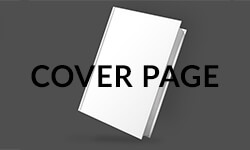
In the academic and professional realms, the presentation of written work is nearly as crucial as the content itself. The most popular guidelines are the APA, MLA, and Chicago style. Each has its unique specifications and nuances, particularly when it comes to crafting the cover page , a pivotal aspect that provides the first impression of any document. This article delves into the distinct features and requirements with examples .
Inhaltsverzeichnis
- 1 Cover page in a nutshell
- 2 Definition: Cover page
- 3 When is a cover page used?
- 4 Essentials of a cover page
- 6 Cover page for students
Cover page in a nutshell
What is a cover page? A cover page is also called the title page and is the first page of an academic essay or other kinds of academic papers. It displays its title, the author’s name, and other relevant information, serving as an introduction or a preview of what’s inside. Think of it like the cover of a book, giving a glimpse of what the content is about.
Definition: Cover page
The cover page serves as a representation of the author. The format will differ based on the style you choose. It typically contains:
- Name of the author
- Name of the professor
- Name of the student’s educational establishment
- Due date of the paper
The topic of the paper and the course name are always included on the title page, regardless of the format used. As the name suggests, it is placed at the front of the paper and is the first thing your professor will see when they receive your paper. When writing an academic paper, you have to adhere to certain established standards. A cover page is required for many papers, as it introduces the professor to the project. In this article, we will look at the different types and their formats.

When is a cover page used?
A cover page is used in various academic, professional, and publishing contexts to provide a clear and organized introduction to a document. Its usage can vary based on the style guide in reference. Here’s a brief overview of when it is used in APA, MLA, and Chicago styles .
- APA style always requires a title page for both student papers and professional articles or studies. You can read more in our article about the APA format title pages.
- Title of the paper, author’s name, institutional affiliation, course name and number (for students), instructor’s name (for students), and due date
- MLA style does not typically require a title page for research papers , unless specifically requested by the instructor. Instead, essential details are usually placed in the top-left corner of the first page.
- Title, name of the author, instructor’s name, course, and date
Chicago style
- Its usage depends on specific publication or institutional requirements. For formal publications and individual assignments, a title page is typically preferred.
- Title, author’s name, often the specific class or course information, and date of submission
Essentials of a cover page
A cover page requires:
- A running head
- The title of your academic paper
- The name of your university
- The name of the author or authors
Besides these requirements, your professor may ask you to add extra information . As mentioned earlier, you should refer to the latest guidelines to see how the cover should be formatted. With APA style, you have to use 12-point Times New Roman font, double-spacing, and 1-inch margins.
The running head has to be left-aligned, and it should be capitalized. Besides the ‘running head,’ your header should have a maximum of 50 characters.
The title of your paper should also be properly formatted. It should be in the title case, meaning the first letters of every word is capitalized. The only words that should not be capitalized are small words like articles and prepositions . The title should be no more than 12 words in length. For the title, you should use whole words only. Avoid contractions and abbreviations.
The names of the authors should also be properly formatted. If multiple authors were involved in writing the paper, they should all be mentioned, along with the institutions they are affiliated with. Students with different affiliations should be listed separately.
The cover page should not be spruced up unnecessarily. Its only objective is to provide the reader or professor with essential information. Don’t use colored paper, colored text, or fancy images to make it look more attractive. That will only make you appear less professional.
There are as many kinds of cover pages as there are academic writing formats. The most commonly used cover page formats are MLA , APA , and Chicago . The difference lies in their format and content. Here is an overview of each of these types.
APA cover page
The APA format cover page should start with the running head, positioned at the top left of your paper. The page number is on the top right. Your paper title is to be in title case, in the upper half of the page. For the title, you simply respect the rules for capitalization in titles . APA recommends that your title should be 12 words in length or less, and it should not include any abbreviations or contractions. Words that serve no purpose should also be left out. The title can take up one or two lines.
The information for an APA format cover is below the title of your paper, then the names of the authors and their institutional affiliations are listed. The author’s name should include first name, middle initial(s), and last name. The titles of the author(s) and their educational qualifications should not be included in this part of the paper. The institutional affiliation is included under the author’s name, and it shows where the researcher carried out the research.
For more information, read our article about the APA cover page .
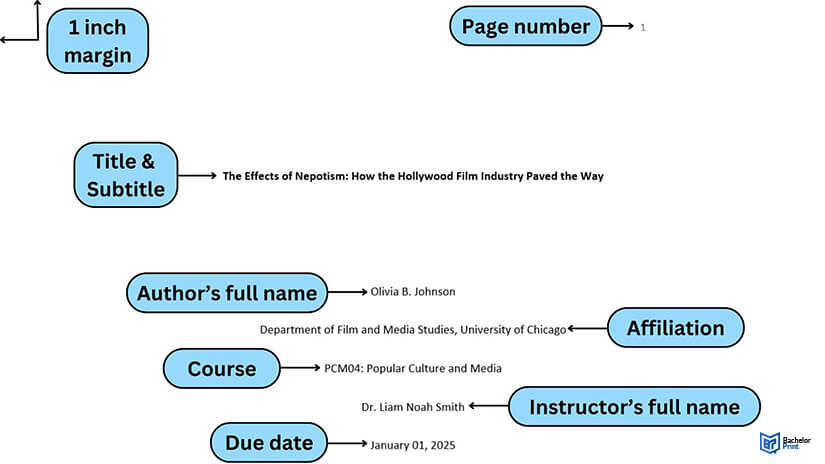
MLA cover page
When using an MLA format cover page, it is not required. Your instructor will let you know whether they require a cover. For some assignments, a cover can make your paper look more professional, so you should always consider adding one. For MLA, you will have to include:
- School or university name
- Title of your paper
- Name of the class
- Name of your professor
- Date of submission
Note: Different instructors may have different style requirements. You may need to add other details to the cover page.
Like in APA, the format cover page is double-spaced and the letters are centered on the page. The name of your university should be typed first, after which you can skip down to a third of the page and add the title of the research paper. From here, you can skip several lines and add the rest of the details. These details should be on the bottom half of the page.
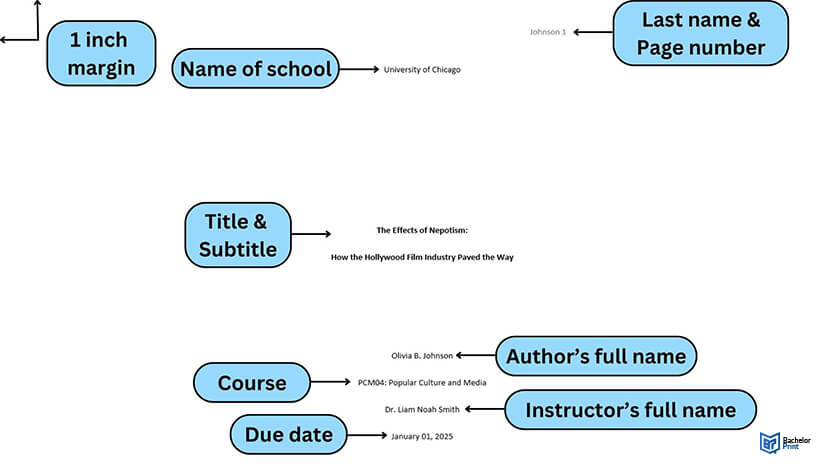
Chicago style cover page
Usually, the Chicago style does not require a cover. However, they may be requested for individual assignments. In this case, the Chicago cover page includes the title of your page, the name of the author, the name of your teacher, the course title, and the due date. The title should be typed at about one-third of the way down the page. Some professors accept covers using 11 pt. Arial font, but the most widely used font is 12 pt. Times New Roman. You should generally avoid using fancy fonts or underlining the text. You can only use bold for the title and subtitle. The page should be double-spaced. The page number should not be included in a Chicago style cover page.
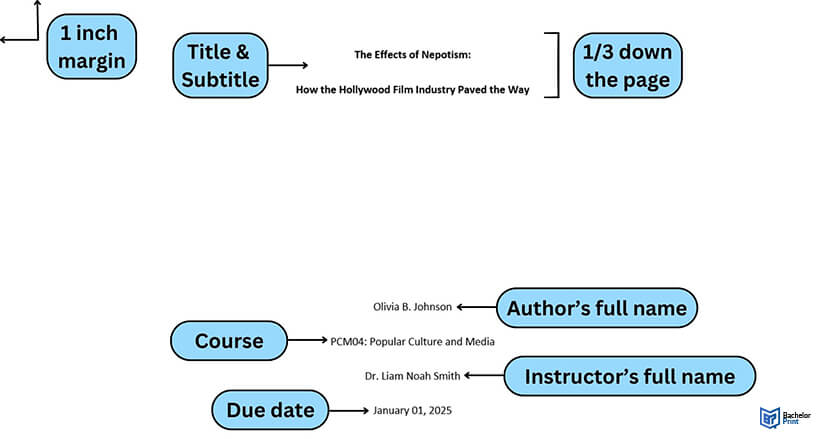
Cover page for students
Creating a student cover page involves considering the essential elements that offer a concise overview of the work, while also adhering to any style or formatting guidelines in place. Here’s a general outline of what should be included.
- Title of the document/paper Ideally placed at the center of the page Should be specific and concise, capturing the essence of the paper
- Student’s name Usually positioned under the title Full name is recommended unless specified otherwise
- Course name and code Essential for academic submissions to ensure the paper reaches the correct instructor or department
- Instructor/professor’s name Specify the honorific title (e.g., Dr., Prof.) if applicable
- Date of submission Can be written in different formats (e.g., September 21, 2023, or 21-09-2023) depending on institutional or style guide preferences
- Institution Name Name of the school, college, or university
- Class or section If applicable Especially useful for larger courses with multiple sections
- Assignment number or type Optional E.g., “Assignment 1”, “Final Project”, “Research Paper”, etc.
Formatting tips
Use a readable font like Times New Roman, Arial, or Calibri. Typically, a 12 pt. font size is recommended. Details on the cover are usually double-spaced for clarity. Ensure you have standard margins (typically 1 inch, so 2.54 cm, on all sides) unless specified otherwise by your institution or style guide. Most of the details are typically centered on the page, but some style guides might have different requirements. Always refer to specific institutional guidelines or the requested style guide (e.g., APA, MLA, Chicago) as they may have distinct stipulations for page composition.
How do you write a title page for an essay?
The title page of your academic essay should be simple and straightforward, and it should only consist of text. For the cover page design, you should consult the latest manual of your institution. You may be required to use a certain style of formatting, such as APA, or MLA. The requirements for an APA title page differ from the requirements of an MLA title page .
Does the title page count as one page?
The title page will take up a whole page of your essay. However, it does not count as one page in terms of the page count for your essay . The table of contents and bibliography are also not included in the word/page count of your essay.
How do you format the names of multiple authors?
If more than one person was involved in writing the paper, all the names should be clearly indicated. The format used will depend on the affiliations of the authors and the institution that they’re working with. For an APA cover page, the authors should be listed below the title of the paper. List their first names, middle initials, and last names with any titles and qualifications.
Is a cover page always required?
The cover page is typically required when you use the APA citation style. With the MLA and Chicago formats, your instructor will advise you on whether you have to include a cover. However, more often than not, MLA formatting does not require a title page.
Will you be penalized for adding a cover page when it is not required?
No instructor will penalize you for including a cover page when it is not strictly required. You should consider adding one if you are uncertain whether it is required for your academic writing work. Nevertheless, you should check with your institution anyway to ensure that you’re fulfilling all requirements.
I’m so happy with how my dissertation turned out! The order process was very...
We use cookies on our website. Some of them are essential, while others help us to improve this website and your experience.
- External Media
Individual Privacy Preferences
Cookie Details Privacy Policy Imprint
Here you will find an overview of all cookies used. You can give your consent to whole categories or display further information and select certain cookies.
Accept all Save
Essential cookies enable basic functions and are necessary for the proper function of the website.
Show Cookie Information Hide Cookie Information
| Name | |
|---|---|
| Anbieter | Eigentümer dieser Website, |
| Zweck | Speichert die Einstellungen der Besucher, die in der Cookie Box von Borlabs Cookie ausgewählt wurden. |
| Cookie Name | borlabs-cookie |
| Cookie Laufzeit | 1 Jahr |
| Name | |
|---|---|
| Anbieter | Bachelorprint |
| Zweck | Erkennt das Herkunftsland und leitet zur entsprechenden Sprachversion um. |
| Datenschutzerklärung | |
| Host(s) | ip-api.com |
| Cookie Name | georedirect |
| Cookie Laufzeit | 1 Jahr |
| Name | |
|---|---|
| Anbieter | Playcanvas |
| Zweck | Display our 3D product animations |
| Datenschutzerklärung | |
| Host(s) | playcanv.as, playcanvas.as, playcanvas.com |
| Cookie Laufzeit | 1 Jahr |
Statistics cookies collect information anonymously. This information helps us to understand how our visitors use our website.
| Akzeptieren | |
|---|---|
| Name | |
| Anbieter | Google Ireland Limited, Gordon House, Barrow Street, Dublin 4, Ireland |
| Zweck | Cookie von Google zur Steuerung der erweiterten Script- und Ereignisbehandlung. |
| Datenschutzerklärung | |
| Cookie Name | _ga,_gat,_gid |
| Cookie Laufzeit | 2 Jahre |
Content from video platforms and social media platforms is blocked by default. If External Media cookies are accepted, access to those contents no longer requires manual consent.
| Akzeptieren | |
|---|---|
| Name | |
| Anbieter | Meta Platforms Ireland Limited, 4 Grand Canal Square, Dublin 2, Ireland |
| Zweck | Wird verwendet, um Facebook-Inhalte zu entsperren. |
| Datenschutzerklärung | |
| Host(s) | .facebook.com |
| Akzeptieren | |
|---|---|
| Name | |
| Anbieter | Google Ireland Limited, Gordon House, Barrow Street, Dublin 4, Ireland |
| Zweck | Wird zum Entsperren von Google Maps-Inhalten verwendet. |
| Datenschutzerklärung | |
| Host(s) | .google.com |
| Cookie Name | NID |
| Cookie Laufzeit | 6 Monate |
| Akzeptieren | |
|---|---|
| Name | |
| Anbieter | Meta Platforms Ireland Limited, 4 Grand Canal Square, Dublin 2, Ireland |
| Zweck | Wird verwendet, um Instagram-Inhalte zu entsperren. |
| Datenschutzerklärung | |
| Host(s) | .instagram.com |
| Cookie Name | pigeon_state |
| Cookie Laufzeit | Sitzung |
| Akzeptieren | |
|---|---|
| Name | |
| Anbieter | Openstreetmap Foundation, St John’s Innovation Centre, Cowley Road, Cambridge CB4 0WS, United Kingdom |
| Zweck | Wird verwendet, um OpenStreetMap-Inhalte zu entsperren. |
| Datenschutzerklärung | |
| Host(s) | .openstreetmap.org |
| Cookie Name | _osm_location, _osm_session, _osm_totp_token, _osm_welcome, _pk_id., _pk_ref., _pk_ses., qos_token |
| Cookie Laufzeit | 1-10 Jahre |
| Akzeptieren | |
|---|---|
| Name | |
| Anbieter | Twitter International Company, One Cumberland Place, Fenian Street, Dublin 2, D02 AX07, Ireland |
| Zweck | Wird verwendet, um Twitter-Inhalte zu entsperren. |
| Datenschutzerklärung | |
| Host(s) | .twimg.com, .twitter.com |
| Cookie Name | __widgetsettings, local_storage_support_test |
| Cookie Laufzeit | Unbegrenzt |
| Akzeptieren | |
|---|---|
| Name | |
| Anbieter | Vimeo Inc., 555 West 18th Street, New York, New York 10011, USA |
| Zweck | Wird verwendet, um Vimeo-Inhalte zu entsperren. |
| Datenschutzerklärung | |
| Host(s) | player.vimeo.com |
| Cookie Name | vuid |
| Cookie Laufzeit | 2 Jahre |
| Akzeptieren | |
|---|---|
| Name | |
| Anbieter | Google Ireland Limited, Gordon House, Barrow Street, Dublin 4, Ireland |
| Zweck | Wird verwendet, um YouTube-Inhalte zu entsperren. |
| Datenschutzerklärung | |
| Host(s) | google.com |
| Cookie Name | NID |
| Cookie Laufzeit | 6 Monate |
Privacy Policy Imprint
Posted on 21st June 2018
What’s a Title or Cover Page? And How Do I Make One?
By Cite This For Me
A title or cover page is exactly what you’d imagine—it’s the very front page of your academic essay or paper, which includes important information about your work. The function of a title or cover page is that it allows the reader to identify your work at a glance, but it can also help your assignments to look neater and more professionally put-together. Additionally, it provides a handy buffer against any finger smudges and will protect your work from whatever might be lurking at the bottom of your school bag!
Title or cover pages are common in work that’s formatted using the APA style rules, although you may also need to include them when following other popular formatting styles such as MLA or Chicago. If you’re unsure as to whether you need to create a title page, check with your teacher, tutor, or college advisor.
Failing to include a title page if required could give a negative first impression to whoever is reading your work. It could even cause you to lose marks for presentation, so don’t be tempted to skip this simple formatting task that should only take a few minutes to complete.
How to Make an APA Title Page
If you’ve been instructed to use APA style formatting then it’s likely that your tutor is expecting to see a title page including the following information:
- Title of the paper
- Author name
- Author institution i.e. the name of your school, college or university
- Running head i.e. an abridged title that features at the top left of every page
For example:
- Title : Does The Internet Encourage Individualization?
- Author : Roxanne Wells
- Institution : The University of Derby
- Running Head : Internet And Individualization
The above information should be centered (with the exception of the running head) and double-spaced, in Times New Roman font, size 12. See an APA example below:

How to Make an MLA Title Page
Title or cover pages are less common when following the MLA style of formatting. Instead, your tutor might prefer you to include a header with the required information at the top left of the first page of your assignment. These usually look like this:
- Tutor/Professor name
- Course name and number
- Due date of the paper
- Author: Roxanne Wells
- Tutor/Professor Name: Professor Dale
- Course: Sociology 100
- Due Date: 1 May 2018
The above header should sit under a one-inch top margin, to the left of the page. It should be double-spaced and in a legible font (Times New Roman is a safe choice), size 12. The title of your essay should follow, centered, with the body of your work commencing underneath. In addition, every page should have a right-aligned header with the author’s last name and the page number.

If you do need to make up a cover page, however, you would set out the above information, plus the title/subtitle of your assignment and the name of your institution, centered and presented over a full page.
When it comes to creating a correctly formatted and professional-looking title page, we’ve got you covered!
Home / Guides / Writing Guides / Parts of a Paper / How to Write an Essay Cover Page
How to Write an Essay Cover Page
What you include in your cover page depends slightly on which citation style you are using, but the rules are generally the same.
Guide Overview
- APA cover pages
- MLA cover pages
For APA cover pages:
Include the title of the paper, running head, the author’s name, institutional affiliation, and an author’s note.
Here is an example of a cover page in APA:

For MLA cover pages:
Cover pages are not as frequently used in MLA format, as the inclusion of headers is preferred.
A header looks like this:

Cover pages can include the name of your school, your paper title, your name, your course name, your teacher or professor’s name, and the due date of the paper. If you are unsure of what to include, check with your instructor.
Here is an example of a cover page in MLA format:

For more help making cover or title pages, visit our title page generator here.
EasyBib Writing Resources
Writing a paper.
- Academic Essay
- Argumentative Essay
- College Admissions Essay
- Expository Essay
- Persuasive Essay
- Research Paper
- Thesis Statement
- Writing a Conclusion
- Writing an Introduction
- Writing an Outline
- Writing a Summary
EasyBib Plus Features
- Citation Generator
- Essay Checker
- Expert Check Proofreader
- Grammar Checker
- Paraphrasing Tools
Plagiarism Checker
- Spell Checker
How useful was this post?
Click on a star to rate it!
We are sorry that this post was not useful for you!
Let us improve this post!
Tell us how we can improve this post?
Grammar and Plagiarism Checkers
Grammar Basics
Plagiarism Basics
Writing Basics
Upload a paper to check for plagiarism against billions of sources and get advanced writing suggestions for clarity and style.
Get Started
How To Make A Cover Page For An Assignment? An Ultimate Guide
Link Copied
Share on Facebook
Share on Twitter
Share on LinkedIn
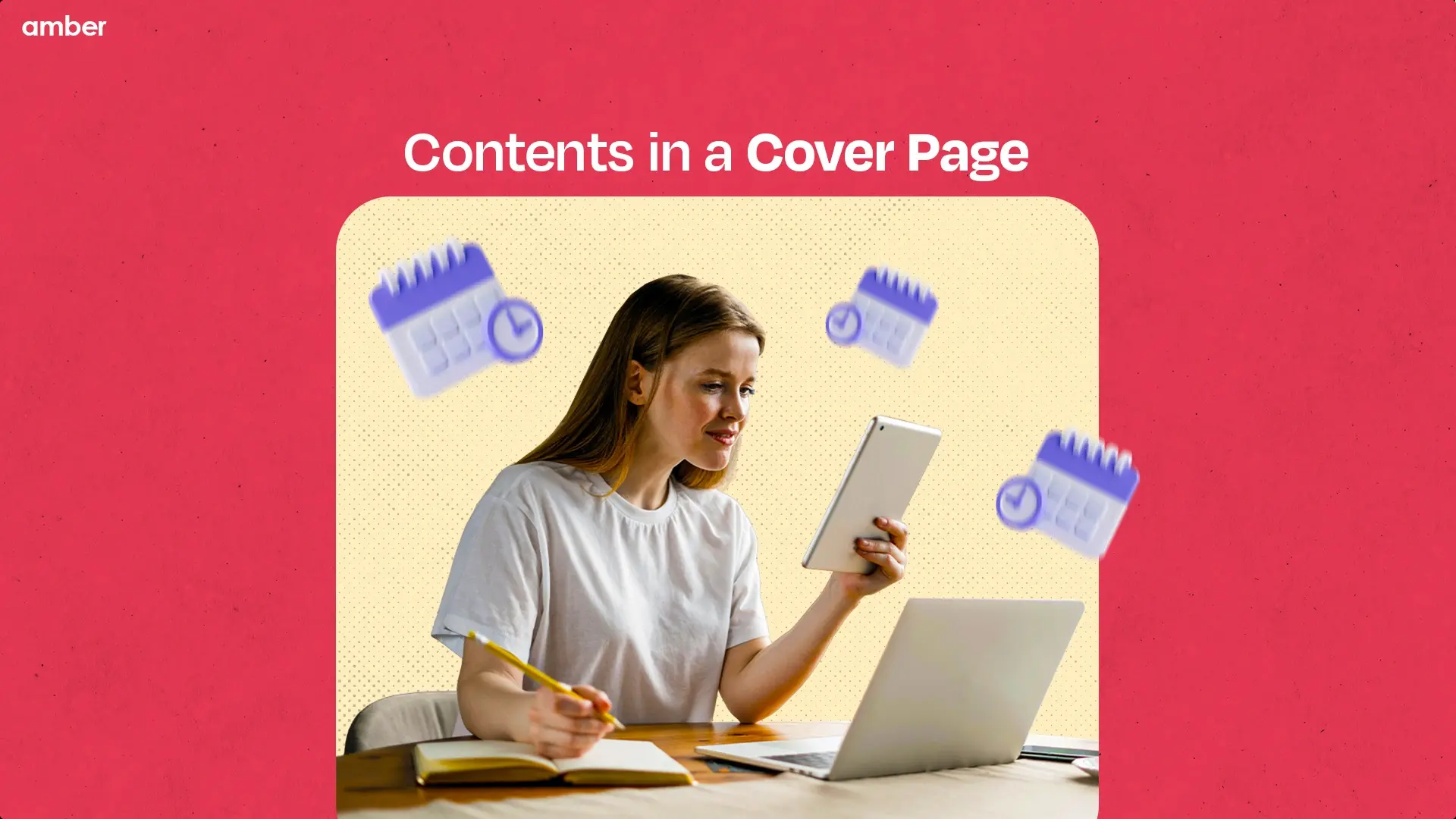
Level Up Your Assignment Game!
What if you made a shiny assignment but forgot to make the cover page? Remember that first impression in 'The Devil Wears Prada'? Well, your cover page for an assignment deserves a standing ovation, not a silent groan from your teacher. But don't worry! Here's an ultimate guide on how to make a cover page for an assignment that will transform your cover page from 'blah' to 'wow' in no time!
What is a Cover Page in an Assignment?
The cover page, your essay's first impression, sets the stage for professionalism. It's where your name, course details, and due date greet your instructor. Though not always obligatory, a polished presentation of the first page of an assignment can earn you favour. Following a good format for an assignment cover page for a university leads to higher scores, making it a smart academic move.
Why is a Cover Page Important?
As students, we all know the adage - you never get a second chance to make a first impression. That's where the cover page comes in - it's the gatekeeper to your assignment , and trust us, you don't want to drop the ball here. Mess it up, and your professor might write you off before they even start reading. But nail it? Well, that's like hitting a home run before you've even stepped up to the plate.
If you are thinking about how to make a cover page for an assignment, a well-formatted, error-free cover page is the key to unlocking your instructor's curiosity. Following the institution's template is just the cherry on top, showing you're a team player who respects the rules of the game.
How to Make a Cover Page for an Assignment?
When it comes to the question of how to make an assignment front page, the goal is clear! The cover page is our chance to grab the professor's attention right off the bat. Why settle for a drab intro when you can learn all about how to design the front page of an assignment? Let's dive into the essential elements of the cover page.
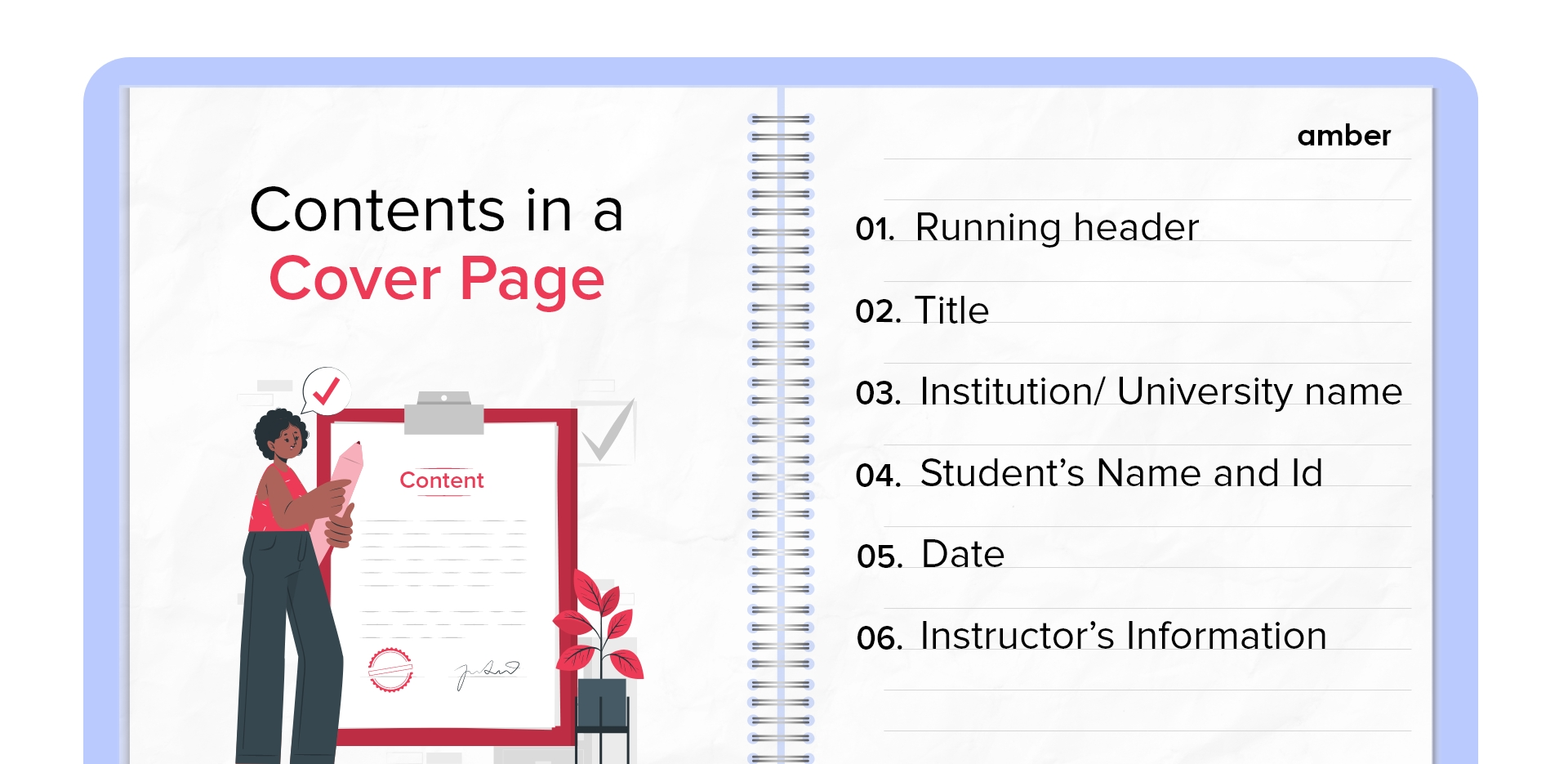
1. Running Header
A running header goes on top of the first page of an assignment, separate from the main text. It's often used for APA style. Keep it short, 50 characters max, all uppercase.
Next is the title, explaining your work's content. Write it in the title case, capitalising most words. Avoid abbreviations and aim for 15-20 words. Centre the fully written title on the cover page.
3. Institution/ University Name
Your university or institution name belongs on the cover page for an assignment, too. Different from the title, it shows readers where you're from and did the research . For reports or presentations , include your workplace or college .
4. Student’s Name and ID
How to make a cover page for an assignment look credible? The answer is to Clearly state the author(s), name(s), and id(s) on the cover page. Include affiliations for multiple authors. For group projects, list all students' names and universities before the title. It ensures proper author credit.
Including the date on your cover page tells readers when you finished the work. Use the exact publication date. It also helps for future reference if someone needs to find work within a certain timeframe.
6. Instructor’s Information
Providing your instructor's details, such as name, designation, and department, shows you completed the work for their specific class. It ensures the assignment reaches the right person and department, avoiding any confusion.
7. Numbering the Pages Ensure that all pages of your assignment are numbered. It is typically done in the header or footer of each page, starting from the front page of an assignment as page 1 . Consistent page numbering helps maintain organisation and easy navigation of the document.
8. Bibliography A bibliography is a crucial part of any academic assignment, listing all the sources you referenced. It should be placed at the end of your assignment and formatted according to the required citation style (APA, MLA, Chicago, etc.). On the cover page, you can include a note indicating that a bibliography is included.
Make your assignment's cover page in peace with amber's comfortable housing!
Book through amber today!
How to Make A Front Page of an Assignment: APA Format
The APA (American Psychological Association) format heavily emphasises the cover page details. To know how to make a cover page for an assignment in an APA format, follow these specific guidelines.

1. Page Number Placement: Start by placing the page number in the upper-right corner, always as 1, aligning it with the one-inch margin. It will be part of your running head, a feature in APA format, but for student papers, it's just the page number.
2. Title Placement: Move down three or four lines (double-spaced) from the top and centre of the title page of an assignment. Make it bold and use proper capitalisation rules for titles.
3. Author's Name: After the title, leave an empty line, then write your name. Keep it simple without any special formatting. If there are multiple authors, separate their names with commas and use "and" before the last author's name.
4. Department and School: Below your name, write your department or division, followed by your school's name, separated by a comma.
5. Course Information: Include the course name and its numeric code directly below your school's name.
6. Instructor's Name: Under the course information, write your instructor's full name, including any titles like ' Dr. '
7. Date: Finally, on the last line, write the date. Spell out the month for clarity.
How to Create a Cover Page for an Assignment: MLA Format
In MLA (Modern Language Association) style, you usually don't need a cover page for an assignment; instead, you list essential details at the start of the first page. If you are wondering how to make an assignment front page in MLA style, here are the instructions.

1. Student’s Name: Begin with the first student’s name on the top-left corner of the page, double-spaced.
2. Additional Authors: If there are more authors, list each on a separate line following the first student’s name.
3. Instructor’s Name: Below, the last author’s name, including the instructor’s title, like “Professor Willow,” on a new line.
4. Course Details: Write the course name along with its numeric code on the next line.
5. Date: Following the course details, write the date in full, avoiding abbreviations for months. You can use either day-month-year or month-day-year format.
6. Title of the Paper: The most crucial part of the tip on how to make the title page of an assignment. Centre the title four or five lines below the date, maintaining double spacing. Remember to capitalise the title according to standard rules, avoiding bold or italics.
How to Design Cover Page for Assignment: CMS Format
CMS (Chicago Manual of Style), a citation method for acknowledging sources in academic papers, grants ownership rights to authors, preventing plagiarism and aiding readers in locating sources. However, mastering one style isn't sufficient due to varying rules.
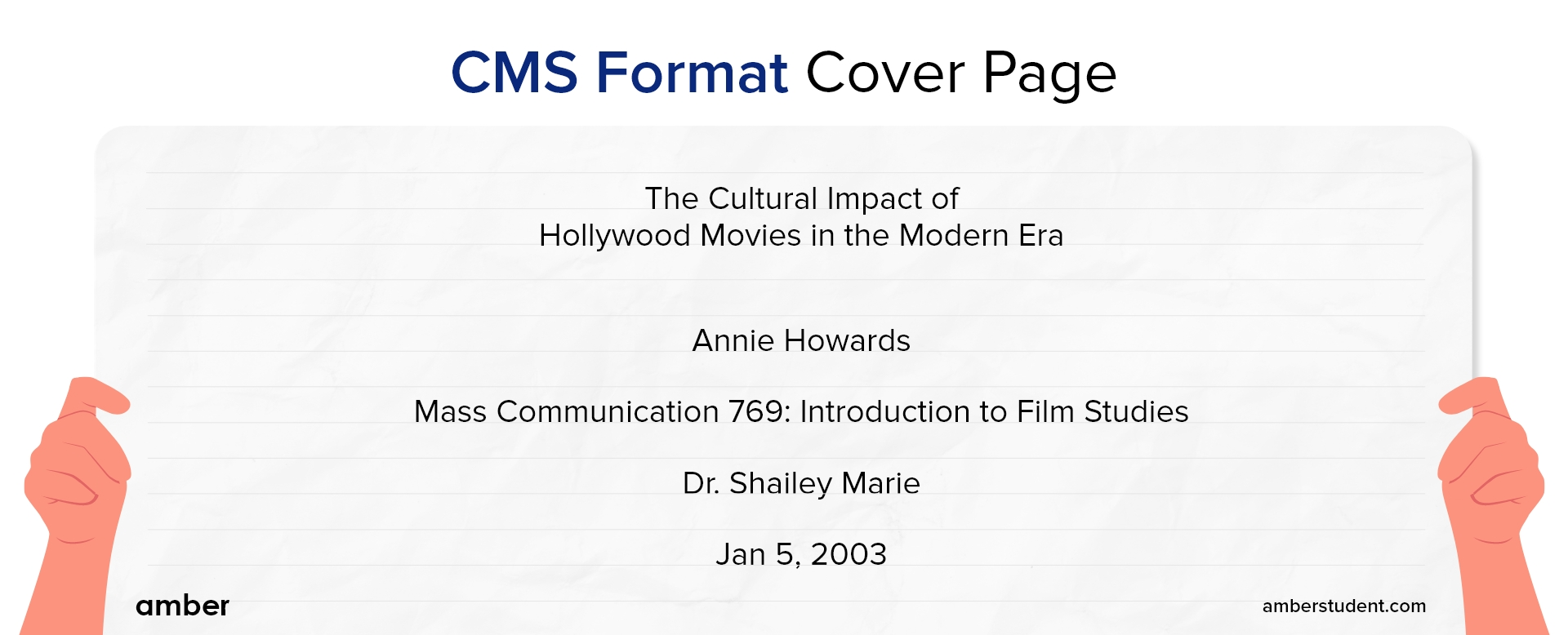
1. Margins: Leave one-inch margins on all sides of your cover page to give it a neat look and provide space for your text.
2. Font: Stick to Times or Times New Roman font in 12 pt size for a professional appearance that's easy to read.
3. Spacing: Double-space the text on your cover page to make it clear and readable.
4. Text Alignment: Align your text to the left to create a clean, organised appearance, avoiding fully justified text.
5. Indentation: For a structured layout, start paragraphs, block quotes, and bibliography entries with a 1/2" indent.
6. Page Numbers: Number your pages in the top right corner, excluding the cover page. Include your last name to avoid confusion if pages get mixed up.
7. Two-Sided Printing: Confirm with your teacher if you can print on both sides of the paper for eco-friendly printing.
8. Title: Centre the title of your paper halfway down the page for prominence and clarity.
9. Name: Centre your name under the title to identify yourself as the author.
10. Teacher's Information: Write your teacher's name, the course title, and the date at the bottom, centred in three lines.
11. Font Consistency: Maintain consistency by using Times or Times New Roman font in 12 pt size for the cover page. Avoid using bold, underline, or decorative fonts.
12. Page Numbering and Count: Exclude the cover page from page numbering and total page count. It's not necessary to add a page number to the cover page.
Tips and Tricks to How to Make a Good Cover Page for an Assignment?
Now that you have understood how to make a cover page for an assignment, it is also necessary to understand the basic tips and tricks before you start writing one. To make a great cover page, follow the steps outlined in the guide.
1. Correct Information
The main answer to the question of how to design a cover page for an assignment is to ensure that it includes accurate details such as your name, assignment title, course name, date, and any other required information to avoid confusion and errors.
2. Formatting
Use consistent formatting throughout the cover page, including font style, size, and spacing, to present a polished and organised appearance that aligns with academic standards.
3. Relevance
If you’re wondering how to write the front page of an assignment, then include relevant details that provide context. It would help the reader understand the purpose and scope of your work.
4. Clarity and Conciseness
Keep the content of the cover page clear and concise, using simple language and avoiding unnecessary information to communicate your message effectively.
5. Professional Tone
Maintain a professional tone on the cover page by using formal language and addressing the recipient respectfully, reflecting your commitment to the assignment and your academic integrity.
6. Proofreading
Carefully proofread the cover page for any grammatical errors, typos, or inconsistencies. Ensure it reflects your attention to detail and presents a polished final product.
A well-crafted cover page can make your assignment shine like a diamond in the rough. Follow these tips for how to write the front page of an assignment, and you'll impress your professor right off the bat. Don't drop the ball on this crucial first impression; knock their socks off with an A+ cover page material! The best part is that a good cover can improve your grades drastically!
Frequently Asked Questions
Is there any assignment cover page template in word, which is the best website for an assignment cover page sample, how to design a cover page for assignment after completing writing and formatting, what is a cover page for a school assignment, can i write a 2-page cover.
Your ideal student home & a flight ticket awaits
Follow us on :

Related Posts

Top 10 Universities In Los Angeles

Masters at Cambridge University: Top Courses, Eligibility, Fee

25 Best Undergraduate Business Schools in the World

Planning to Study Abroad ?

Your ideal student accommodation is a few steps away! Please fill in your details below so we can find you a new home!
We have got your response
amber © 2024. All rights reserved.
4.8/5 on Trustpilot
Rated as "Excellent" • 4800+ Reviews by students
Rated as "Excellent" • 4800+ Reviews by Students
APA Title Page (Cover Page) Format, Example, & Templates
Saul Mcleod, PhD
Editor-in-Chief for Simply Psychology
BSc (Hons) Psychology, MRes, PhD, University of Manchester
Saul Mcleod, PhD., is a qualified psychology teacher with over 18 years of experience in further and higher education. He has been published in peer-reviewed journals, including the Journal of Clinical Psychology.
Learn about our Editorial Process
Olivia Guy-Evans, MSc
Associate Editor for Simply Psychology
BSc (Hons) Psychology, MSc Psychology of Education
Olivia Guy-Evans is a writer and associate editor for Simply Psychology. She has previously worked in healthcare and educational sectors.
On This Page:
In APA Style (7th edition), the cover page, or title page, should include:
- A running head (professional papers only) and page number
- The title of the paper
- The name of the author(s)
- The institutional affiliation
- An author note; optional (professional papers only)
- A student paper should also include course information
Note : APA 7 provides slightly different directions for formatting the title pages of professional papers (e.g., those intended for scholarly publication) and student papers (e.g., those turned in for credit in a high school or college course).
Professional paper APA title page

Student paper APA title page

Formatting an APA title page
Note : All text on the title page should be double-spaced and typed in either 12-point, Times New Roman font. In the 7th edition, APA increaded the flexibility regarding font options: which now include Calibri 11, Arial 11, Lucida Sans Unicode 10, Times New Roman 12, or Georgia 11. All words should be centered, and capitalize the first letter of important words.
Running Head
In the 7th edition of the APA style manual, running heads are only required for professional papers that are being submitted for publication (student papers do not require a running head, but still need a page number).
Your title page should contain a running head that is flush left at the top of the page and a page number that is flush right at the top of the page.
Place the running head in the page’s header:
- The running head is the abbreviated title of the paper (IN UPPERCASE LETTERS) aligned left on the page header of all pages, including the title page. APA (7th edition) guidelines require that running heads be a maximum of 50 characters (spaces count as characters).
- The “Running head:” label used in the APA sixth edition is no longer used.
- Place the page number in this same header, but align right, beginning with page number 1 on the title page.
- This header should be 1 inch from the top. Some instructors allow for 1/2 inch, too, but the default is 1 inch.
Paper Title
Position the title of the paper in the upper half of the page. The title should be centered and written in boldface, and important words should be capitalized.
The APA recommends that your title should be a maximum of 12 words and should not contain abbreviations or words that serve no purpose.
Author Name(s)
Institutional affiliation.
Position the school or university’s name below the author(s) name, centered.
A student paper should also include the course number and name, instructor name, and assignment due date.
Further Information
- APA Student Title Page Guide
- APA Referencing
- How to Write a Lab Report
- Essay Writing Guide for Psychology Students
- APA Style Citations & References
- Example of an APA Formatted Paper
Related Articles

Student Resources
How To Cite A YouTube Video In APA Style – With Examples

How to Write an Abstract APA Format

APA References Page Formatting and Example

How do I Cite a Source with Multiple Authors in APA Style?

How to Write a Psychology Essay

Lab Report Format: Step-by-Step Guide & Examples
- PRO Courses Guides New Tech Help Pro Expert Videos About wikiHow Pro Upgrade Sign In
- EDIT Edit this Article
- EXPLORE Tech Help Pro About Us Random Article Quizzes Request a New Article Community Dashboard This Or That Game Popular Categories Arts and Entertainment Artwork Books Movies Computers and Electronics Computers Phone Skills Technology Hacks Health Men's Health Mental Health Women's Health Relationships Dating Love Relationship Issues Hobbies and Crafts Crafts Drawing Games Education & Communication Communication Skills Personal Development Studying Personal Care and Style Fashion Hair Care Personal Hygiene Youth Personal Care School Stuff Dating All Categories Arts and Entertainment Finance and Business Home and Garden Relationship Quizzes Cars & Other Vehicles Food and Entertaining Personal Care and Style Sports and Fitness Computers and Electronics Health Pets and Animals Travel Education & Communication Hobbies and Crafts Philosophy and Religion Work World Family Life Holidays and Traditions Relationships Youth
- Browse Articles
- Learn Something New
- Quizzes Hot
- This Or That Game
- Train Your Brain
- Explore More
- Support wikiHow
- About wikiHow
- Log in / Sign up
- Job Application Documents
- Resume Preparation
How to Make a Cover Page
Last Updated: January 12, 2024 Fact Checked
This article was co-authored by Amber Rosenberg, PCC . Amber Rosenberg is a Professional Life Coach, Career Coach, and Executive Coach based in the San Francisco Bay Area. As the owner of Pacific Life Coach, she has 20+ years of coaching experience and a background in corporations, tech companies, and nonprofits. Amber trained with the Coaches Training Institute and is a member of the International Coaching Federation (ICF). There are 7 references cited in this article, which can be found at the bottom of the page. This article has been fact-checked, ensuring the accuracy of any cited facts and confirming the authority of its sources. This article has been viewed 146,879 times.
Many professional and academic documents will require a cover page, but the information required for a cover page varies depending on the nature of the document. Some cover pages, like those you would send with a resume, are actually letters. Others, like those used for academic essays, are actually title pages. For all cover letters, using a standard font such as Times New Roman, in at least a 12-point size, is recommended.
Formatting a Cover Page For Your Resume

- You should usually use standard 1-inch (2.5-cm) margins, but you can use margins as small as 0.7 inch (1.8 cm) as long as they are the same on all sides.

- If you have a fax number, you should include it below your phone number and above your e-mail address.

- Write out the full name of the month, rather than abbreviating by using a number. For example, rather than write 1/1/2001, you should write January 1, 2001.
- Leave a blank line above and below the date.

- Note that you do not need to include an e-mail address, phone number, or fax number for the company.
- If you do not know the name of a specific contact at the company, skip over that information.

- When you can determine the gender of the receiver, leave out his or her first name and address the receiver as "Mr." or "Ms." For example, "Dear Ms. Smith" or "Dear Mr. Johnson."
- If you do not know the gender of the receiver, skip the title and use his or her full name. For example, "Dear Pat Roberts."
- Leave a blank line before and after you address the receiver.

- If you are a student, state the university you attend and your major.
- Indicate what position you are applying for as well as how or where you heard about the position.
- You can also mention the name of a professional or academic contact you know who has a positive connection to the reader or company.

- List any special projects, awards, or accomplishments that have a clear connection to the skill set requested by the employer.

- You can include your phone number and e-mail address, as well, but it is not entirely necessary since this information is included in your header.

- Always use black ink to sign formal documents.
Making a Cover Page For a Fax

- Include your phone number and your fax number beneath your name and address.
- Leave at least two blank lines below this header and the rest of the document.

- It's a good idea to save your document as a template for future fax use, since the general format will remain the same.
- The most important quality to your fax cover sheet is that it be clear and easy to read.

- Label the date with "DATE," the receiver's name with "TO," your name with "FROM," and your phone number with "PHONE."
- In the United States, the date will be written in "Month, Day, Year," while in most other countries, it will be written "Day, Month, Year."

- Label the time with "TIME," the receiver's fax number with "FAX," your fax number with "FAX," and your e-mail address with "EMAIL."
- Note that the receiver's name and fax number should be placed on the same horizontal line. Likewise, your name and fax number should be placed on a shared horizontal line of their own.

- Note that this line does not need to be in all capital letters.

- If you had previous contact with the receiver concerning this fax, state that information.
- Introduce your message with the label "MESSAGE:"
- Below your message, ask the receiver to verify the receipt of the document by calling the phone number provided or using the e-mail address provided.

- Specific privacy guidelines for transmission of protected confidential information may vary. If you work for a health provider, you may need to follow additional guidelines to protect the privacy of your client.
Formatting a Cover Page For Your Manuscript

- Use your real name. If you are submitting the manuscript under a pen name, you can follow your real name with your pen name. Introduce a pen name with "A.K.A." or "(Pen name: John Doe)."
- If you're submitting your work to a context that will be judged anonymously, you'll include your contact information on the cover page, while omitting your name and contact information from the title page.

- You do not need to use an exact word count. For instance, if your manuscript is 63,472 words, round it off to 63,000 or 63,500.
- Introduce the word count with "Approximately ______ words."

- Typing the title in all capital letters is a fairly common practice, but it is not necessary.
- It's not necessary to underline, italicize, or bold the title.

- You don't have to include any indication of copyright protection, as your work is automatically protected.
- Never bind or connect the pages of your manuscript in any way. Your cover letter, like the other pages of your manuscript, should be unbound and placed in an envelope or box.
Using APA Style For Your Cover Page

- Introduce the running head with the words "Running head." Follow this label with a colon.
- The running head itself should be in all capital letters.
- The running head should be no longer than 50 characters, including spaces and punctuation.

- The page number and running head should be evenly aligned horizontally.

- Capitalize the first letter of all major words but not for minor words. For example: How to Make a Cover Page
- Do not italicize, bold, or underline the title.

- For example, if you are submitting the paper for a class taken at the University of North Carolina at Asheville, you should include this in the line beneath the author's name (i.e. your name, and the names of your co-authors.)
- Check with your professor for any additional guidelines.
Using MLA Style For Your Cover Page

- Be aware that cover pages are not standard in MLA format, but some professors do request them.

- Do not bold, italicize, or underline either the title or the subtitle.

- Your name should be written using the same font and size as the other words on your title page.
- Don't try to use a cute or clever font for any part of your cover page, as professors don't care for this.

- Introduce your instructor as "Dr." when appropriate. If you cannot use this title to address your instructor, at least introduce him or her as "Professor." For example, "Dr. John Doe" or "Professor John Doe."
- Include both the course name and number.
Using Chicago Style For Your Cover Page
- In Chicago style, cover page and title page refer to the same thing.
- Your professor may have other requirements. Make sure you use the preferred formatting for your course.

- Capitalize the first letter of each major word in your title, but not those belonging to minor words. For example: How to Make a Cover Page
- Alternatively, some style guides suggest that the title be presented in ALL CAPS.
- Do not underline, italicize, or bold the title.
- If you have a subtitle, place a colon following your title and write the subtitle on the following line.

- Your name should be typed about three quarters of the way down the page.
- Use the same font and size that you've used throughout the cover page.

- Include both the name and course number of the subject.
- Write your professor's full name and title. Use "Dr." only when appropriate. For example: "Dr. John Doe" or "Professor John Doe."
Expert Q&A

You Might Also Like

- ↑ https://careercenter.georgetown.edu/major-career-guides/resumes-cover-letters/resume-formatting-tips/
- ↑ Amber Rosenberg, PCC. Pacific Life Coach. Expert Interview. 8 March 2022.
- ↑ http://owl.english.purdue.edu/owl/resource/549/01/
- ↑ http://windows.microsoft.com/en-us/windows/create-edit-fax-cover-page#1TC=windows-7
- ↑ https://winningwriters.com/resources/manuscript-tips
- ↑ http://academictips.org/mla-format/mla-format-cover-page/
- ↑ https://owl.english.purdue.edu/owl/resource/717/02/
About This Article

To make a cover page using MLA format, start by setting your margins to 1 inch on all sides and keeping the alignment centered. Next, choose 12 point Times New Roman for your font and place your title roughly one-third of the way down, capitalizing the first letter of every major word in your title. Then, skip several lines below the title and write your full name, as well as any other collaborators. Finally, list the name of your instructor, the name of the class, and the date, making sure to separate each element with a double-spaced line. To learn more, like how to make a cover page using APA or Chicago Style, read on! Did this summary help you? Yes No
- Send fan mail to authors
Did this article help you?

Featured Articles

Trending Articles

Watch Articles

- Terms of Use
- Privacy Policy
- Do Not Sell or Share My Info
- Not Selling Info
wikiHow Tech Help Pro:
Develop the tech skills you need for work and life
How to Make a Cover Page: Illustrative Formatting Examples
Table of contents
- 1.1 MLA Style Cover Page
- 1.2 APA Style Cover Page Format
- 1.3 Chicago Style Cover Page Format
- 1.4 ASA Style Cover Page
- 1.5 Harvard Cover Page Format
- 1.6 Bottom line
A perfect cover page is an essential part of an essay’s presentation. It can make a great first impression on your instructor and set the tone for your essay. First, to write a cover page, understand your assignment’s formatting requirements. This includes the required format for the cover page, which may vary depending on your instructor’s or institution’s guide.
Once you have this information, you can create a title page that looks professional. It should include the title of your essay , your name, the course title, and other pertinent details. In this guide, we’ll walk you through how to make a cover page for an essay. This article will show the following:
- We’ll describe how a good cover page should look.
- In the article, we offer you examples of different formats of a cover page, including MLA, APA, and more.
- You’ll know the measurements you require to position some cover page aspects.
What Does a Paper Cover Page Look Like?
Creating a cover page for an essay in grade school was simple – add your name and date, and it’s done. However, structuring an essay and following grammar rules in university involves multiple steps that may be unfamiliar to you. But knowing how to format an essay can make the process easier. However, it can be overwhelming to determine the appropriate structure and ensure that your essay adheres to grammatical rules.
A well-designed cover page is crucial for an essay’s presentation; many students wonder how to make one. Therefore, we have compiled a guide on creating a title page for the most commonly used citation formats you may come across.
A cover page is a separate page at the beginning of your academic essay. It contains the title and author’s name and may also feature details like page number, course name, instructor name, and more. Remember that it’s essential to format your page consistently with the rest of your essay.
Use these tips when writing your cover page:
- Keep every margin at 1 inch;
- Select a font that’s easy to read. We’d recommend Times New Roman and Arial for this;
- Always keep the font size at 12;
- Use double-line spacing.
MLA Style Cover Page
The MLA cover page has a vague format for essay pages. Instead, formatting guidelines are based on your teacher’s preferences and standard MLA (Modern Language Association) text formatting. You can follow some best practices to create an MLA essay cover that looks professional. A typical sample MLA cover centers essay titles about one-third of the page’s length. You can also use italics or bold lettering to emphasize important words or phrases.
In our sample MLA format cover, including the necessary MLA heading in the top-left corner is crucial. Follow this guide for proper writing of the cover page template:
- Instructor’s name;
- Page number half an inch away from the top;
- Your name is an inch away from the top;
- The arrangement of the details is an inch away from the leftmost side of the sheet, while ensuring it’s double-spaced throughout;
- A half-inch indent in the first paragraph.
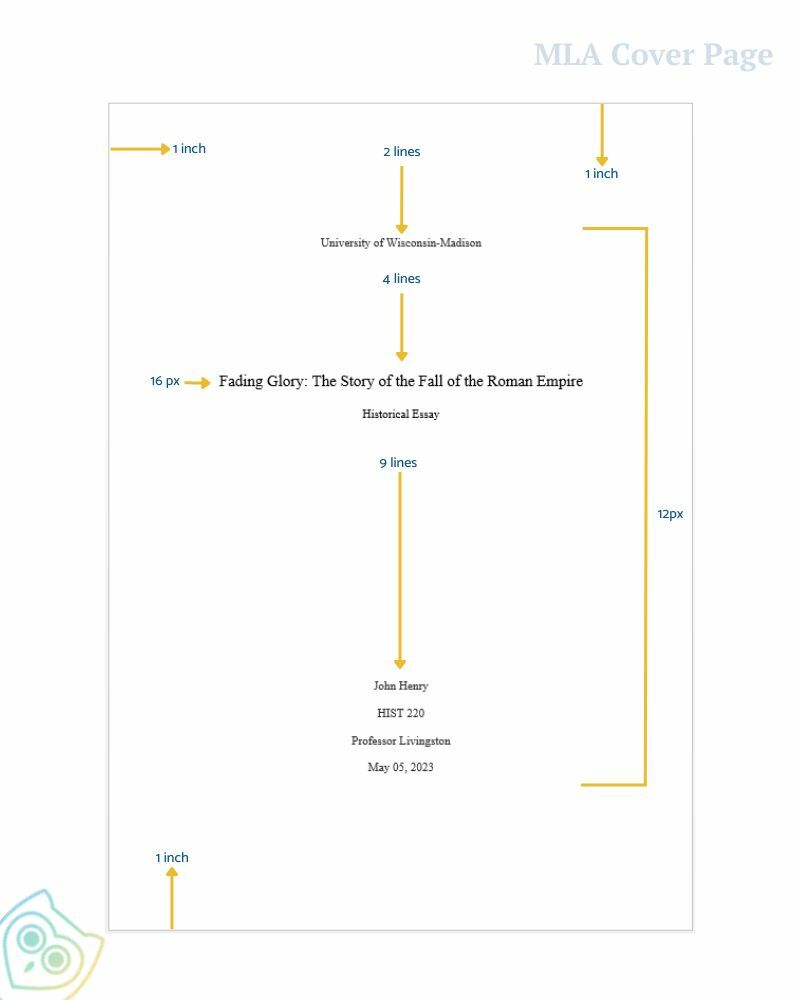
APA Style Cover Page Format
The APA citation format is widely used in the academic and business worlds but has some challenging aspects. For this reason, many busy students order cheap essays to avoid dealing with the nuances of APA essay cover. For your APA cover page, keep your essay’s title brief, under 12 words, and center it. Below the title, include your first, middle, initial, and last names without academic credentials like a PhD. On the following line, indicate your research location, usually your university. Below are the properties of the APA cover page format:
- The title of the paper, centered at the top of the page.
- Your name (student’s name), centered below the title.
- The institutional affiliation (college or university name), centered below your name.
- Course name and number.
- You professors’/instructor’s name.
- Optionally, you can include a running head aligned to the left margin (with the words “Running head:” followed by a shortened version of the title).
- Finally, include a page number in the top-right corner.
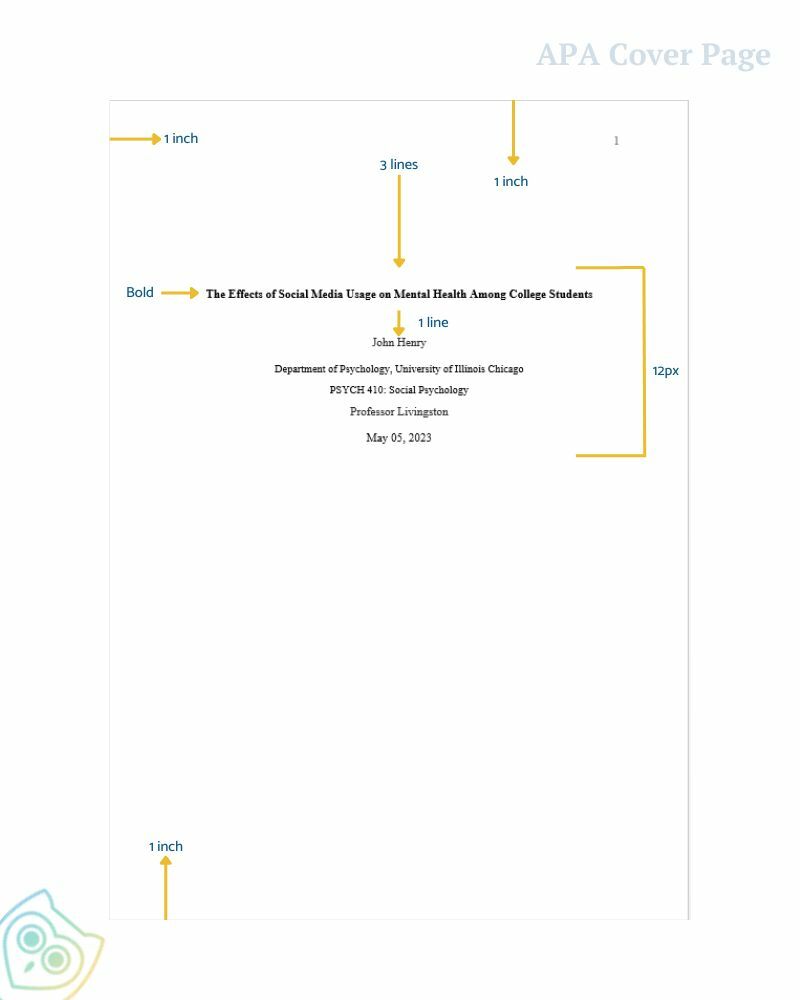
Chicago Style Cover Page Format
The Chicago page format, commonly called Chicago style paper, is a popular citation format used in the humanities department. The Chicago cover page format typically includes the following:
- The title of your essay centered on the page and in the title case (i.e., the first letter of each major word is capitalized);
- Your name is centered below the title;
- The course title is centered below your name;
- The instructor’s name is centered below the course title;
- The due date is centered below the instructor’s name.
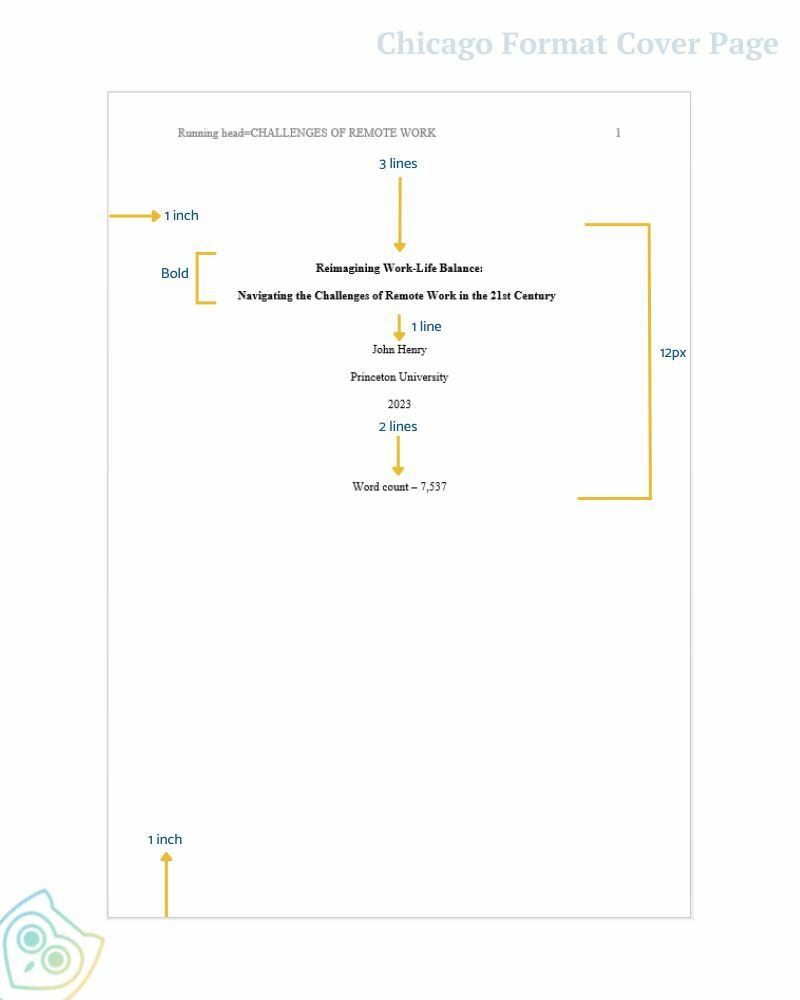
The page may also include a shortened title at the top and a page number in the header of each subsequent page. It’s essential to follow the specific structuring requirements set by your instructor or institution when creating your Chicago-style cover page. The Chicago and Turabian styles are similar in the following ways:
- Both styles typically place the title of the paper one-third to halfway down the cover page, centered horizontally;
- The title is usually in title case; the major words are capitalized;
- The author’s name is listed below the title and centered horizontally;
- The name of the institution with which the author is affiliated is often placed below the author’s name on the page;
- Both styles generally don’t include a page number on the cover page.
Additionally, endeavor to use the same font on your cover page that you use in your paper. Follow proper capitalization rules for essay titles, using uppercase for keywords and lowercase for articles and prepositions unless they begin the title. This ensures consistency and professionalism throughout your research papers; if you have more questions, you can always check PapersOwl’s page for more information.
ASA Style Cover Page
The cover page format of ASA is based on APA and includes a running head. In ASA, keep your header below 60 characters. Another distinction is that ASA mandates the inclusion of a total word count on the cover sheet, encompassing footnotes and references.
Additionally, include your name and course. List them all vertically below your name and course, if you conducted research at several institutions. Apart from these differences, all other elements follow the APA essay format .
It’s worth noting that page numbers start on the title page and must be placed in the bottom-right corner.
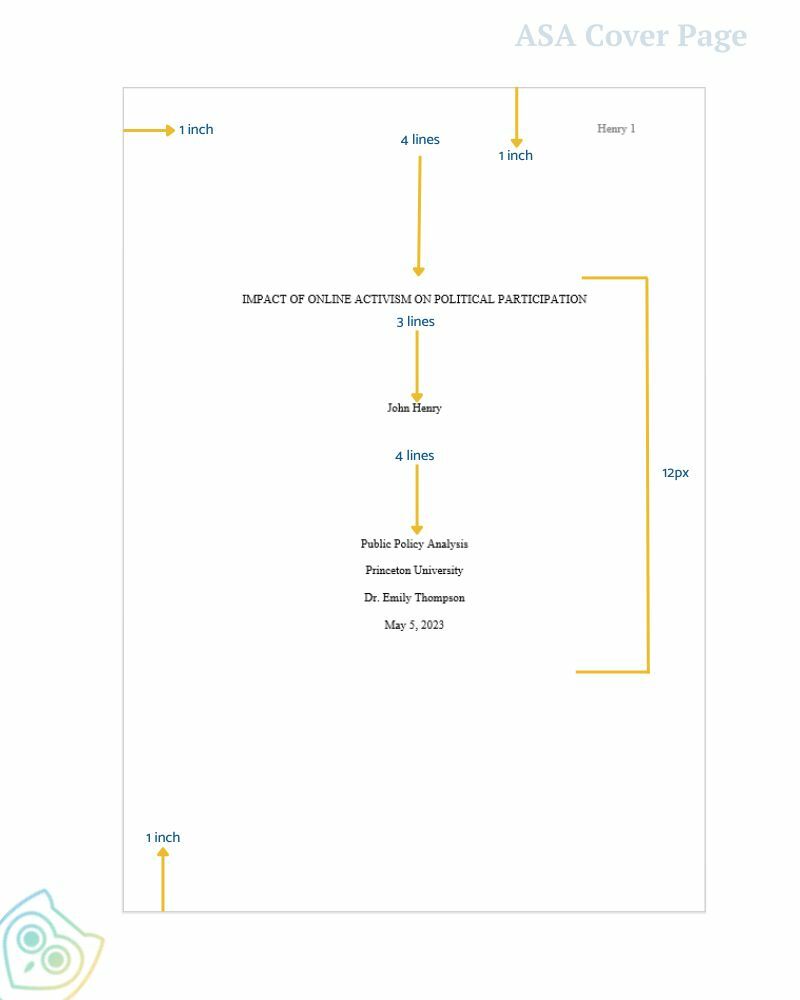
Harvard Cover Page Format
The Harvard cover page is also known as the Harvard referencing style. It is primarily used in social science and humanities disciplines, including literature, history, and economics.
The Harvard cover page example typically includes the following information, arranged in this order:
- Title of the research paper;
- Author’s name (last name, followed by the first initial);
- Date of submission;
- Course name and number;
- Name of instructor.
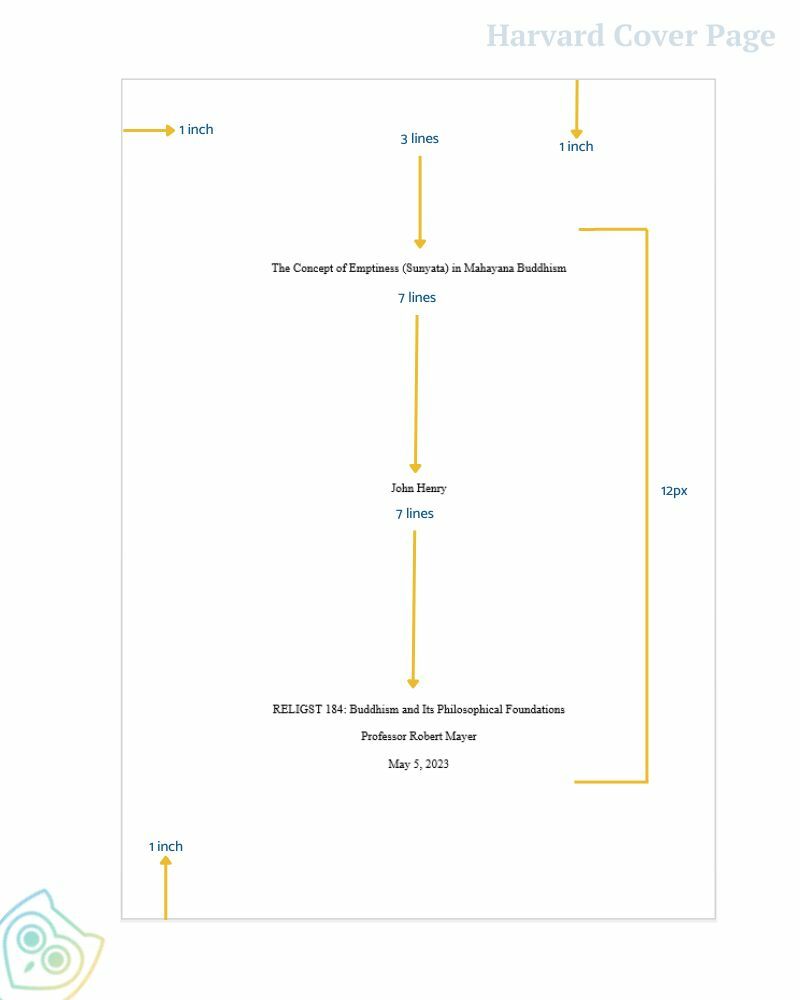
In addition to the cover page, the Harvard referencing format requires in-text citations and a reference list at the end of the document. The in-text citations include the author’s last name and year of publication, while the reference list provides complete bibliographic information for each source cited in the document.
Bottom line
Although formatting your work according to the requirements of your college might be challenging, it is vital. Undergraduate students, who sometimes take classes in several different areas at once, should be especially concerned about this. However, keep these requirements from obstructing your ability to learn. Use these suggestions to create the ideal cover page, and if you need assistance, we are always here to help. And if your professors require some changes, their instructions hold more weight than the guidelines mentioned here.
Readers also enjoyed

WHY WAIT? PLACE AN ORDER RIGHT NOW!
Just fill out the form, press the button, and have no worries!
We use cookies to give you the best experience possible. By continuing we’ll assume you board with our cookie policy.
Have a language expert improve your writing
Run a free plagiarism check in 10 minutes, generate accurate citations for free.
- Knowledge Base
- Dissertation
- Thesis & Dissertation Title Page | Free Templates & Examples
Thesis & Dissertation Title Page | Free Templates & Examples
Published on May 19, 2022 by Tegan George . Revised on July 18, 2023.
The title page (or cover page) of your thesis , dissertation , or research paper should contain all the key information about your document. It usually includes:
- Dissertation or thesis title
- The type of document (e.g., dissertation, research paper)
- The department and institution
- The degree program (e.g., Master of Arts)
- The date of submission
It sometimes also includes your dissertation topic or field of study, your student number, your supervisor’s name, and your university’s logo.

Instantly correct all language mistakes in your text
Upload your document to correct all your mistakes in minutes

Table of contents
Title page format, title page templates, title page example, other interesting articles, frequently asked questions.
Your department will usually tell you exactly what should be included on your title page and how it should be formatted. Be sure to check whether there are specific guidelines for margins, spacing, and font size.
Title pages for APA and MLA style
The format of your title page can also depend on the citation style you’re using. There may be guidelines in regards to alignment, page numbering, and mandatory elements.
- MLA guidelines for formatting the title page
- APA guidelines for formatting the title page
Prevent plagiarism. Run a free check.
We’ve created a few templates to help you design the title page for your thesis, dissertation, or research paper. You can download them in the format of your choice by clicking on the corresponding button.
Research paper Google Doc
Dissertation Google Doc
Thesis Google Doc
A typical example of a thesis title page looks like this:

If you want to know more about AI for academic writing, AI tools, or research bias, make sure to check out some of our other articles with explanations and examples or go directly to our tools!
Research bias
- Anchoring bias
- Halo effect
- The Baader–Meinhof phenomenon
- The placebo effect
- Nonresponse bias
- Deep learning
- Generative AI
- Machine learning
- Reinforcement learning
- Supervised vs. unsupervised learning
(AI) Tools
- Grammar Checker
- Paraphrasing Tool
- Text Summarizer
- AI Detector
- Plagiarism Checker
- Citation Generator
Receive feedback on language, structure, and formatting
Professional editors proofread and edit your paper by focusing on:
- Academic style
- Vague sentences
- Style consistency
See an example

The title page of your thesis or dissertation should include your name, department, institution, degree program, and submission date.
Usually, no title page is needed in an MLA paper . A header is generally included at the top of the first page instead. The exceptions are when:
- Your instructor requires one, or
- Your paper is a group project
In those cases, you should use a title page instead of a header, listing the same information but on a separate page.
The title page of your thesis or dissertation goes first, before all other content or lists that you may choose to include.
In most styles, the title page is used purely to provide information and doesn’t include any images. Ask your supervisor if you are allowed to include an image on the title page before doing so. If you do decide to include one, make sure to check whether you need permission from the creator of the image.
Include a note directly beneath the image acknowledging where it comes from, beginning with the word “ Note .” (italicized and followed by a period). Include a citation and copyright attribution . Don’t title, number, or label the image as a figure , since it doesn’t appear in your main text.
Cite this Scribbr article
If you want to cite this source, you can copy and paste the citation or click the “Cite this Scribbr article” button to automatically add the citation to our free Citation Generator.
George, T. (2023, July 18). Thesis & Dissertation Title Page | Free Templates & Examples. Scribbr. Retrieved June 24, 2024, from https://www.scribbr.com/dissertation/title-page/
Is this article helpful?
Tegan George
Other students also liked, thesis & dissertation acknowledgements | tips & examples, dissertation table of contents in word | instructions & examples, figure and table lists | word instructions, template & examples, "i thought ai proofreading was useless but..".
I've been using Scribbr for years now and I know it's a service that won't disappoint. It does a good job spotting mistakes”

The cover page is one of the most important parts of writing an essay or doing a report. That’s why you should give it the interest that it deserves. While many people don’t use the term cover page to describe the first page of the report, You can find synonyms (broadly speaking) used for that such as title page or title sheet. In this guide, we will show how you can perfect this art. Yes! It’s an art because not everyone has that ability to catch the eye of anyone seeing that report. With the right cover page templates you can do just that.

Cover page terminology
Technically speaking the terminology used around can refer to the same thing, which is the first page of something. It can be a report an assignment or a one-page format. In general you can find these terms thrown around like it’s the same thing, most of the time, it not. The most used ones are:
Cover sheet or Assignment cover sheet
You can find this in the academic field . It is the paper used by students to display the most important data of the assignment such as the name of the student and the course number.
This assists in the efficient handling of assignments. Other types of information might be included, depending upon the requirements of the course. Some universities require and/or offer cover sheets in standardized formats. These are often in the form of computer files that a student can download, print, and personalize.
Some educational entities that are not universities require also Cover sheets.
Cover letter
Job hunters regularly send a cover letter in addition to their curriculum vitae or applications. This is a method of introducing themselves to prospective employers and describing their viability for the desired positions. Employers may try to find customized and attentively written cover letters. This is an approach of evaluating out candidates who are not adequately thinking about their positions and/or do not have the needed fundamental abilities. You can check out how to write a cover letter .
This is usually used for books as The title page often reveals the title of the work, the person or body accountable for its intellectual content, and the imprint, which consists of the name and address of the book’s publisher and its date of publication. You can see that it’s very important. Especially in paperback editions it might include a much shorter title than the cover or do not have a descriptive subtitle. More details about the publication of the book, including its copyright details, are often printed on the verso of the title page.
What are the types of cover pages?
Academic cover pages.
On the planet of the academic community, following the rules is usually just as crucial as the content inside the paper. This implies you need to have correct in-text citations, quotes, referrals, etc. Most significantly, the file needs to be presented in the proper format. The 3 most common formatting designs for scholastic papers are:
- American Psychological Association (APA)
- Modern Language Association (MLA)
- Chicago Manual of Style (CMS )
Business Cover Pages
In the corporate world, the cover page design is mostly dependent on the nature of the company and the type of document you are producing. Particular cover pages should be official and professional, while others may call for more imagination and flair.
Report Cover Page
This is the general type of the types. It can include all the other types and it can be for a specific niche. The most important thing is using a template that can reflect what is the report is about. For example if the report is about a greenhouse effect, you can choose a template that reflects that or nature in general. In another case if the report is a financial or annual report you can use a template that is professional and infers a business side of things.
How to create a cover page ?
You can create a cove page in most of the software that is in the market, but Microsoft office is the most used in the world. When using Microsoft word you can see that there are some cover pages already included whit the software. You can customize them or create new ones that have some personality. You can check out this guide on how to create a cover page in MS word
Cover page template examples
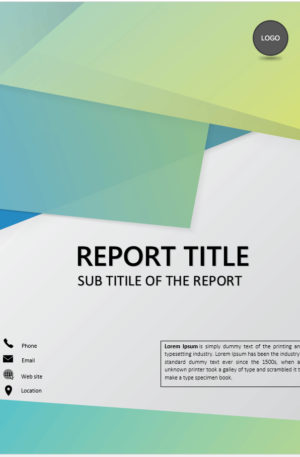
Abstract Cover Page Template

Academic cove page

Artistic cover page templates

Simple Cover page

Creative cover pages template
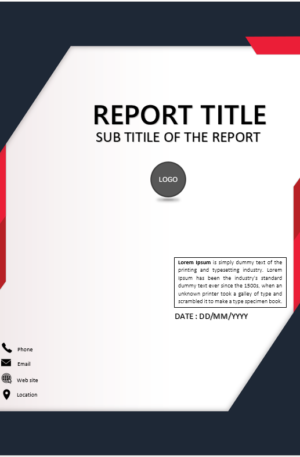
Join Our Exclusive Cover Pages Newsletter!
Subscribe to our newsletter and be the first to receive the latest trends, exclusive discounts, and creative tips on designing professional cover pages. Elevate your documents with our expert insights, delivered straight to your inbox.
- Microsoft Tools Services

There are plenty of texts that require the reader to read everything to understand the context underlying the topic. A cover page allows the reader to know the overarching topic of the text they are going to read.
1. Portfolio Cover Page Example

- Google Docs
2. Notebook Book Cover Example
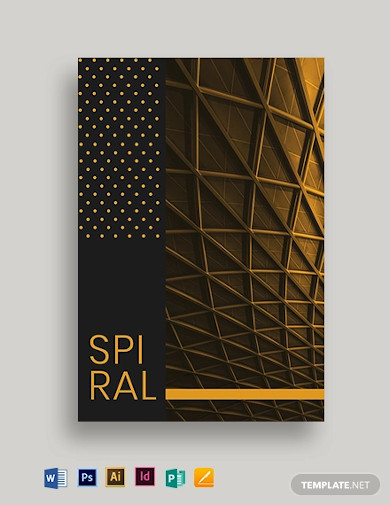
- Illustrator
- Apple Pages
3. Report Cover Page Example

4. Book Cover Example

5. Cover Page Report Example
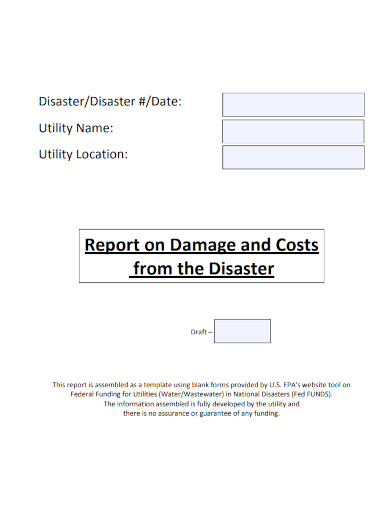
Size: 28 KB
6. Professional Cover Page Example
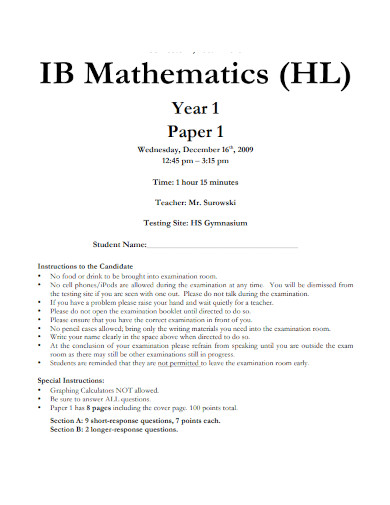
Size: 45 KB
7. Employment Cover Page Example
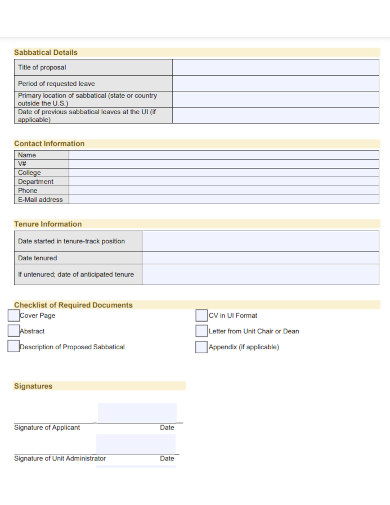
Size: 36 KB
8. Cover Page Example
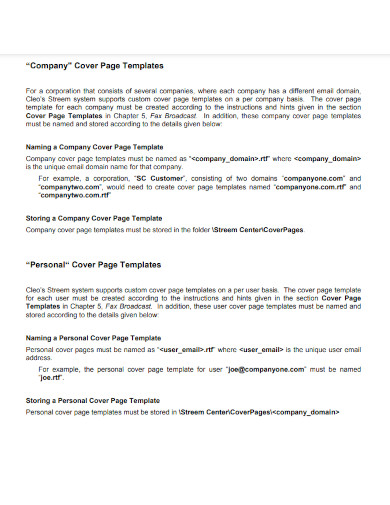
Size: 60 KB
9. Cover Page Proposal Example
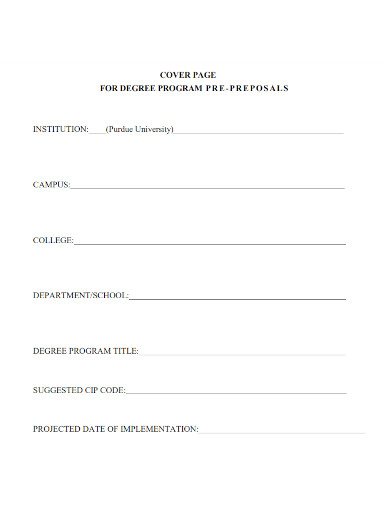
Size: 18 KB
10. One Page Cover Page Example

Size: 44 KB
11. Cover Page Sheet Example
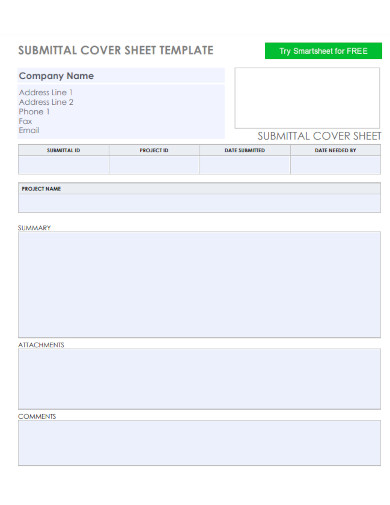
Size: 24 KB
12. Cover Page Template

13. Basic Cover Page Submission Example
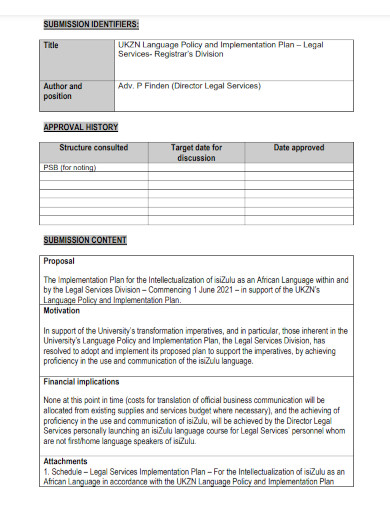
Size: 69 KB
14. Research Cover Page Example
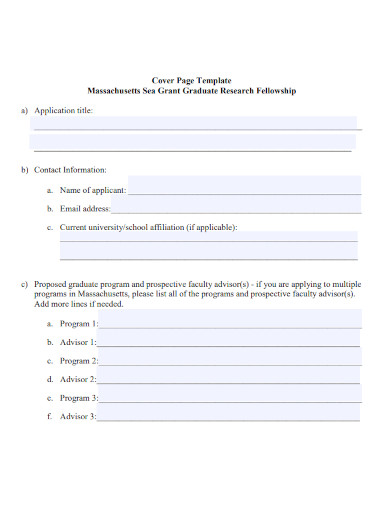
Size: 31 KB
15. Sample Cover Page Example

Size: 74 KB
16. Student Cover Page Example
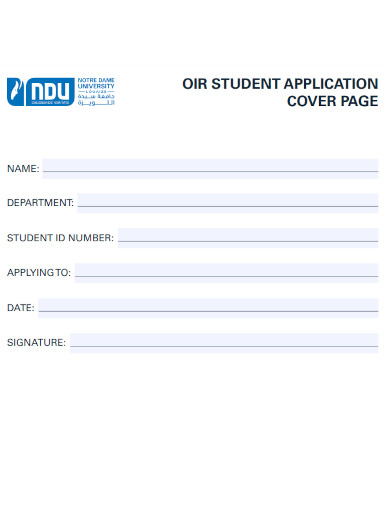
Size: 25 KB
17. Business Plan Cover Page Example
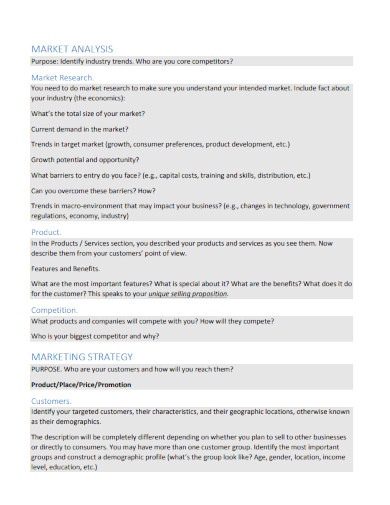
File Format
Size: 59 KB
18. Cover Page Form Example
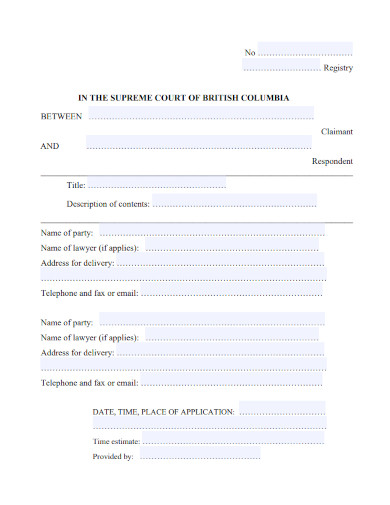
Size: 38 KB
19. Document Cover Page Example
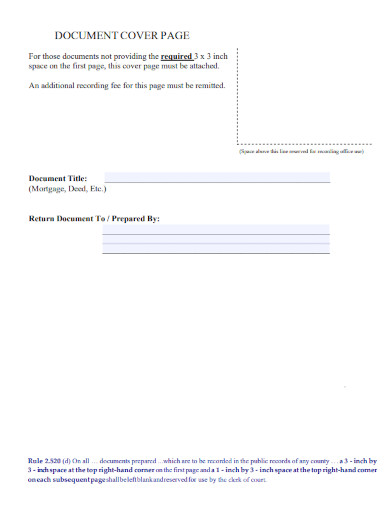
Size: 27 KB
20. Cover Page Manual Example
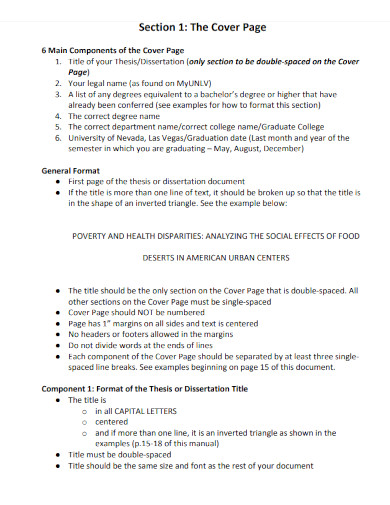
Size: 71 KB
21. Finance Cover Page

22. Marketing Cover Page
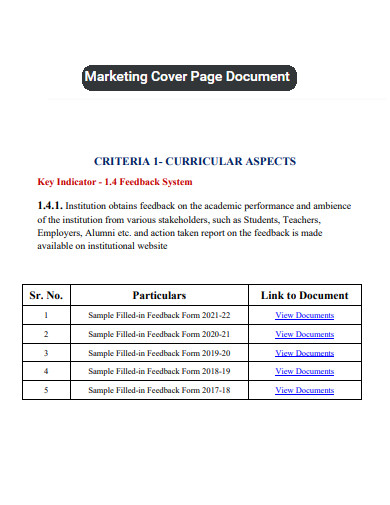
Size: 393 KB
23. Project Work Cover Page
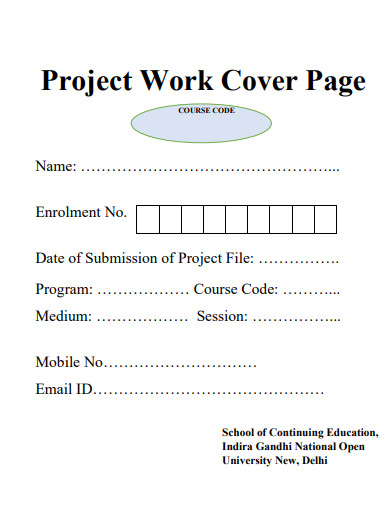
Size: 86 KB
24. Legal Cover Page
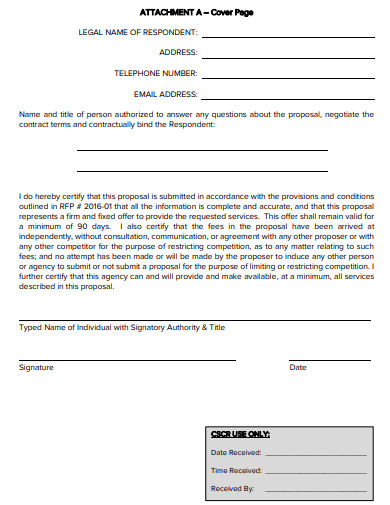
Size: 340 KB
25. Standard Cover Page
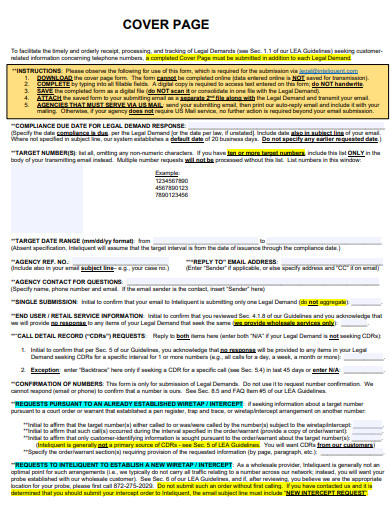
Size: 97 KB
26. Essay Cover Page
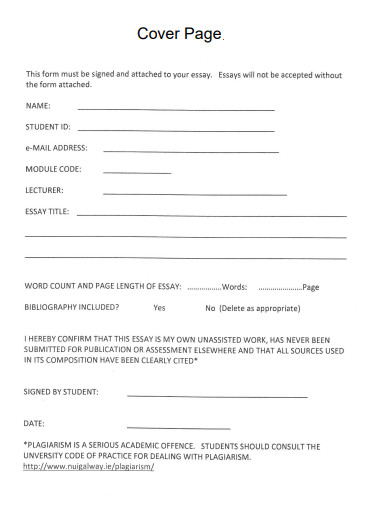
Size: 170 KB
27. Program Cover Page
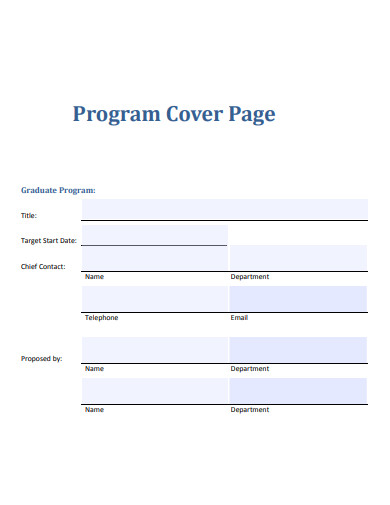
Size: 64 KB
28. Master Cover Page
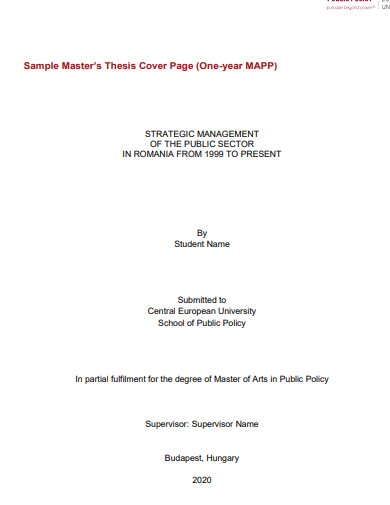
Size: 50 KB
29. Paper Cover Page
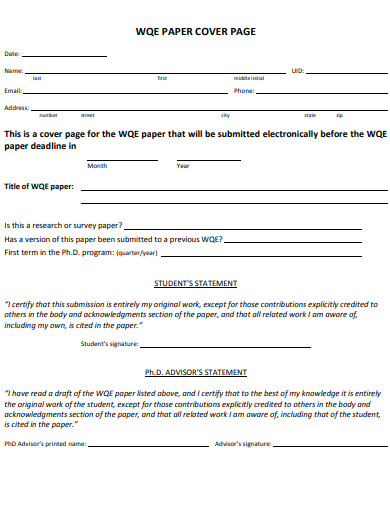
Size: 75 KB
30. MLA Cover Page
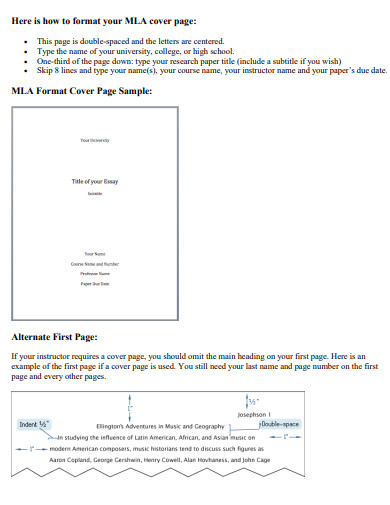
Size: 88 KB
31. Assigment Cover Page
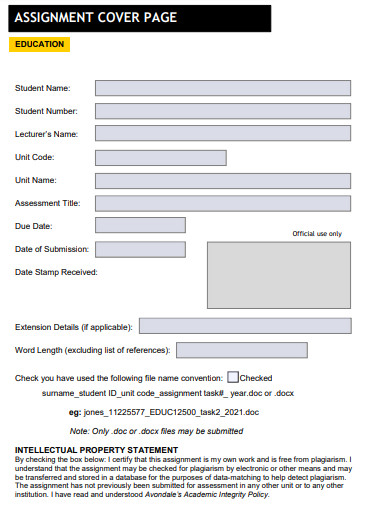
Size: 195 KB
What Is a Cover Page?
A cover page or a title page is a document that acts as a preface of the document, essay , and thesis . This document will have the title of the text and is commonly placed at the front of the document.
How to Write a Cover Page
A good cover page can comprehensively obtain the attention of the reader while providing enough understanding of what the text is about. The APA cover page or title page should be in the proper format according to the standards set by APA 7 . If you need a reference for the outline format of a cover page or how a cover page should look, you may use any of the cover page templates, examples, and manuals.
Step 1: If the Document is Affiliated with a Group, Insert the Logo
If the document has affiliations with a certain group or business, then a logo of the company or business should be inserted at the top part of the cover page. If the logo does not have the name of the company or business then insert the name under the logo.
Step 2: Write the Title of the Document
Write down the full title of the document in the middle of the cover page. This should be typed under the formal header 1 and should be bold.
Step 3: Insert the Identifiers on the Footer
After you have finished writing down the title of the document, you must type and insert the identifiers on the lower half of the cover page. The identifiers include the name/s of the author, the date the text was written, the location (optional), and any relevant information.
Step 4: If needed, Insert a Related Image
If the cover page is used for informal purposes, it may include a graphic or an image accompanying the title of the cover page. This image or graphic must be relevant and adjacent to the title of the document.
What is the importance of a cover page?
The cover page allows the reader to know the context of the report, document, or research without having to read the content listed inside said report, book , document, or research. Not only will it allow the reader to know the overall context of the text, but it will also act as a reference for when, and where the text was made, and the people associated with the text. Note the contents of the cover page are dictated by the location it is used in. This is also concerning the viability of using a cover page in the first place, as some documents label the cover page as an optional part of the text.
Is the cover page of a resume necessary?
The cover page of a resume is optional as the cover letter acts as the front cover of the general resume . It is preferred that you will opt out of the cover page and use the cover letter instead. This is because most HRs and hiring managers require cover letters and will automatically decline any resumes without a cover letter. The cover page does not act as the cover letter and will sometimes be useless in the long run. A perfect resume does not require the use of a cover page.
Can I design or customize the style of the cover page?
Yes, you can design and customize the overall look and style of your cover page. But this is under the impression that the cover is for something that isn’t formal. This is because formal cover pages have to follow the usual standard, structure, and color scheme of the document. If the cover page is for informal books like autobiographies or biographies , you may customize the style of the cover page to your heart’s content.
Cover pages are a type of documents that are used as a means to hold in all the required information about a topic. Cover pages are used in thesis papers, research papers, and essay writing. Cover pages as a whole summarizes the general to specific topics needed without having to read the entire text.
AI Generator
Text prompt
- Instructive
- Professional
10 Examples of Public speaking
20 Examples of Gas lighting
What Is a Cover Page in a Book?
April sanders.

The cover page of a book is not the same thing as the actual cover. Instead, it is one of the first pages you encounter after you open the book. More commonly called the title page, it covers important information about who wrote and published the book, as well as that used by libraries and bookstores for cataloging purposes.
Explore this article
- Title Pages
1 Title Pages
A book might also contain a half-title page, which is the first page you come to after you open it. A half-title page contains only the title of the book -- the rest is blank space. Most books, however, feature a full title page after you open the book. The title and author appear on this page, along with the publisher and sometimes the publishing date. On the back of the title page is listed information for cataloging purposes according to the Library of Congress Guidelines: the ISBN, which is the International Standard Book Number; the copyright notice; the publisher's address and publishing year or years; and the printing numbers. This information is listed at the bottom of the page. The title page is sometimes followed by the dedication page. Occasionally, blank pages appear before the title page.
Related Articles

Parts of a Book: Title Page, Cover Page and End Page

True or False: Mars Edition

What Do Jews Call the Old Testament?

How to Reference a Chapter in a Book That Is Not Edited?

How to Write a Table of Contents in APA Style

How to Write Book Titles in an Essay

How to Find a Publication Date on Journals

How to Stop Email Forwarding From Gmail

How to Properly Write Book Titles in a Report

What Does It Mean When It Says "Ret Dep Item" on My...

How to Remove Pop-Ups on a Samsung Galaxy Tab

How to Access Your Internet Cache on Chrome

How To Buy Textbooks by the Chapters

How to Write the Title of a News Article in a Paper

How to Search for Military Records

How to Find a DOI Number

How to Fix a Kindle Fire That Stopped Unexpectedly

How to Write a Title Page for a Report

Professional Career Development Institute

How to Archive Emails on Outlook Web Access
Regardless of how old we are, we never stop learning. Classroom is the educational resource for people of all ages. Whether you’re studying times tables or applying to college, Classroom has the answers.
- Accessibility
- Terms of Use
- Privacy Policy
- Copyright Policy
- Manage Preferences
© 2020 Leaf Group Ltd. / Leaf Group Media, All Rights Reserved. Based on the Word Net lexical database for the English Language. See disclaimer .
- Cambridge Dictionary +Plus
meanings of cover and page
Your browser doesn't support HTML5 audio
(Definition of cover and page from the Cambridge English Dictionary © Cambridge University Press)
- Examples of cover page
{{message}}
Please choose a part of speech and type your suggestion in the Definition field.
Help us improve the Cambridge Dictionary
cover page doesn't have a definition yet. You can help!

Word of the Day
a member of the Royal Canadian Mounted Police

Fakes and forgeries (Things that are not what they seem to be)

SME definition
Small and medium-sized enterprises (SMEs) represent 99% of all businesses in the EU. The definition of an SME is important for access to finance and EU support programmes targeted specifically at these enterprises.
What is an SME?
Small and medium-sized enterprises (SMEs) are defined in the EU recommendation 2003/361 .
The main factors determining whether an enterprise is an SME are
- staff headcount
- either turnover or balance sheet total
|
|
|
| or |
| |
| Medium-sized | < 250 | ≤ € 50 m | ≤ € 43 m | ||
| Small | < 50 | ≤ € 10 m | ≤ € 10 m | ||
| Micro | < 10 | ≤ € 2 m | ≤ € 2 m | ||
These ceilings apply to the figures for individual firms only. A firm that is part of a larger group may need to include staff headcount/turnover/balance sheet data from that group too.
Further details include
- The revised user guide to the SME definition (2020) (2 MB, available in all EU languages)
- Declaring your enterprise to be an SME (the form is available in all languages as an annex in the revised user guide)
- The SME self-assessment tool which you can use to determine whether your organisation qualifies as a small and medium-sized enterprise
What help can SMEs get?
There are 2 broad types of potential benefit for an enterprise if it meets the criteria
- eligibility for support under many EU business-support programmes targeted specifically at SMEs: research funding, competitiveness and innovation funding and similar national support programmes that could otherwise be banned as unfair government support ('state aid' – see block exemption regulation )
- fewer requirements or reduced fees for EU administrative compliance
Monitoring of the implementation of the SME definition
The Commission monitors the implementation of the SME definition and reviews it in irregular intervals. Pursuant to the latest evaluation, the Commission concluded that there is no need for a revision.
On 25 October 2021, we informed stakeholders by holding a webinar with presentations on the SME evaluation's results and next steps.
Supporting documents
- Study to map, measure and portray the EU mid-cap landscape (2022)
- Staff working document on the evaluation of the SME definition (2021)
- Executive summary on the evaluation of the SME definition (2021)
- Q&A on the evaluation of the SME definition (2021)
- Final report on evaluation of the SME definition (2018) (10 MB)
- Final report on evaluation of the SME definition (2012) (1.8 MB)
- Executive summary on evaluation of the SME definition (2012) (345 kB)
- Implementing the SME definition (2009) (50 kB)
- Implementing the SME definition (2006) (40 kB)
Share this page

IMAGES
VIDEO
COMMENTS
It's best practice for a title of a cover page to be written in a title case, or capitalising the first letter of every word, excluding prepositions and articles. When drafting your title, try to write all words in full and avoid using abbreviations and contractions. It's important for a good title to be about 15-20 words.
Heading. At the top of your cover page, add a formal business header. Example of a business header: Your name, address, phone number and email address. The date. The recipient's name, company and address. If you're unsure of the name of the person you need to send your cover page to, you can use the company name instead.
APA cover page. The APA format cover page should start with the running head, positioned at the top left of your paper.The page number is on the top right. Your paper title is to be in title case, in the upper half of the page. For the title, you simply respect the rules for capitalization in titles.APA recommends that your title should be 12 words in length or less, and it should not include ...
In addition, every page should have a right-aligned header with the author's last name and the page number. See an MLA example below: If you do need to make up a cover page, however, you would set out the above information, plus the title/subtitle of your assignment and the name of your institution, centered and presented over a full page.
Cover pages can include the name of your school, your paper title, your name, your course name, your teacher or professor's name, and the due date of the paper. If you are unsure of what to include, check with your instructor. Here is an example of a cover page in MLA format: For more help making cover or title pages, visit our title page ...
Salutation. If you know the full name of the contact you are writing to, begin the cover letter with "Dear Mr. Suarez.". You can also address them as "Mr.," "Mrs." or "Ms." if you know their gender. If you do not know the name of the contact, you could write "To whom it concerns at (Company Name).".
1. Page Number Placement: Start by placing the page number in the upper-right corner, always as 1, aligning it with the one-inch margin.It will be part of your running head, a feature in APA format, but for student papers, it's just the page number. 2. Title Placement: Move down three or four lines (double-spaced) from the top and centre of the title page of an assignment.
In APA Style (7th edition), the cover page, or title page, should include: A running head (professional papers only) and page number. The title of the paper. The name of the author (s) The institutional affiliation. An author note; optional (professional papers only) A student paper should also include course information.
Download Article. 1. Include your contact information. Type your full name, address, phone number, and e-mail address in the upper left corner of the cover page. While you may choose to include the title of your manuscript on the cover page, this is a separate document from the title page. Use your real name.
A cover page also helps you organize and present information. Most cover pages contain the same information but have you present it in slightly different ways. Following the prescribed format is a way to help you organize and submit it. A cover page can enhance the overall presentation of your essay. They provide a clear delineation between the ...
1. Make your name stand out. Write your name in a header at the top using big, bold letters to help the hiring manager remember your application. And place your contact information either beside or below your name so they have no trouble contacting you later on. 2. Add the hiring manager's contact information.
A cover letter and a cover sheet are both professional documents through which you introduce yourself. While a cover letter is a written message that allows recruiters to consider a candidate, a cover sheet is a brief page of details that appears at the front of a document. By understanding the difference, you can use the appropriate format for ...
The cover page format of ASA is based on APA and includes a running head. In ASA, keep your header below 60 characters. Another distinction is that ASA mandates the inclusion of a total word count on the cover sheet, encompassing footnotes and references. Additionally, include your name and course.
The title page (or cover page) of your thesis, dissertation, or research paper should contain all the key information about your document. It usually includes: Dissertation or thesis title. Your name. The type of document (e.g., dissertation, research paper) The department and institution. The degree program (e.g., Master of Arts)
2. Navigate to the editing and settings menu. Navigate to the "Insert" tab and click on it. When the menu appears, click on the "Pages" option. Another menu appears and you can choose the "Cover pages" option. Several design options, including several pre-designed cover page templates and a blank page, appear.
Cover sheet or Assignment cover sheet. You can find this in the academic field. It is the paper used by students to display the most important data of the assignment such as the name of the student and the course number. This assists in the efficient handling of assignments. Other types of information might be included, depending upon the ...
How to Write a Cover Page. A good cover page can comprehensively obtain the attention of the reader while providing enough understanding of what the text is about. The APA cover page or title page should be in the proper format according to the standards set by APA 7.If you need a reference for the outline format of a cover page or how a cover page should look, you may use any of the cover ...
The cover page of a book is not the same thing as the actual cover. Instead, it is one of the first pages you encounter after you open the book. More commonly called the title page, it covers important information about who wrote and published the book, as well as that used by libraries and bookstores for cataloging ...
Examples of how to use "cover page" in a sentence from Cambridge Dictionary.
Here are the best tips on how to format your resume cover sheet: Use a 1" margin on all sides of the page. Use left-align to adjust your page contents to the left side of the page. Set your cover letter spacing to single or 1.15. Include a digital copy of your signature (if you have one) for a nice, personal touch.
Based on 4 documents. Cover Page means a Bonterms cover page or other document that (a) incorporates the Bonterms Professional Services Agreement by reference, (b) specifies the Key Terms and any Additional Terms and incorporates any Attachments and (c) is signed by Customer and Provider. Sample 1 Sample 2 Sample 3.
The definition of an SME is important for access to finance and EU support programmes targeted specifically at these enterprises. What is an SME? Small and medium-sized enterprises (SMEs) are defined in the EU recommendation 2003/361. The main factors determining whether an enterprise is an SME are.